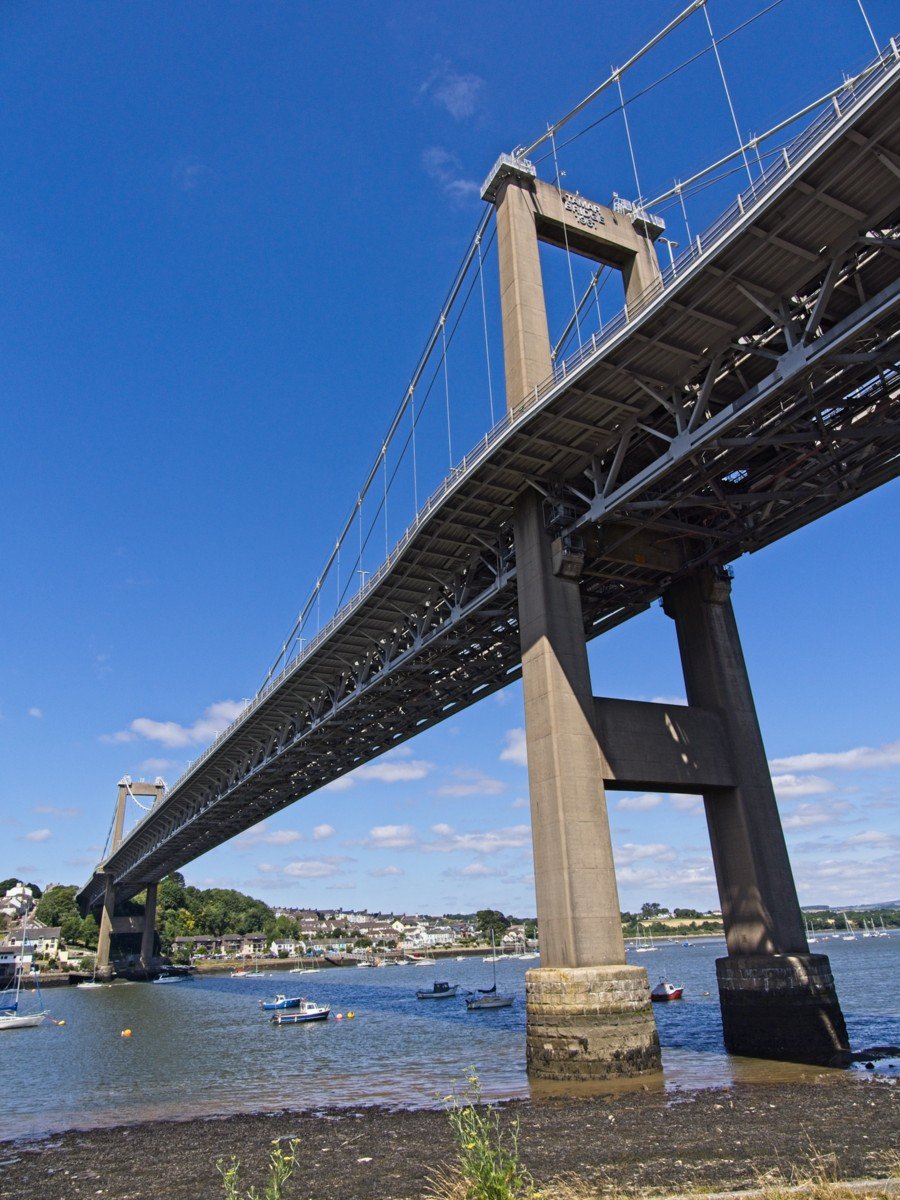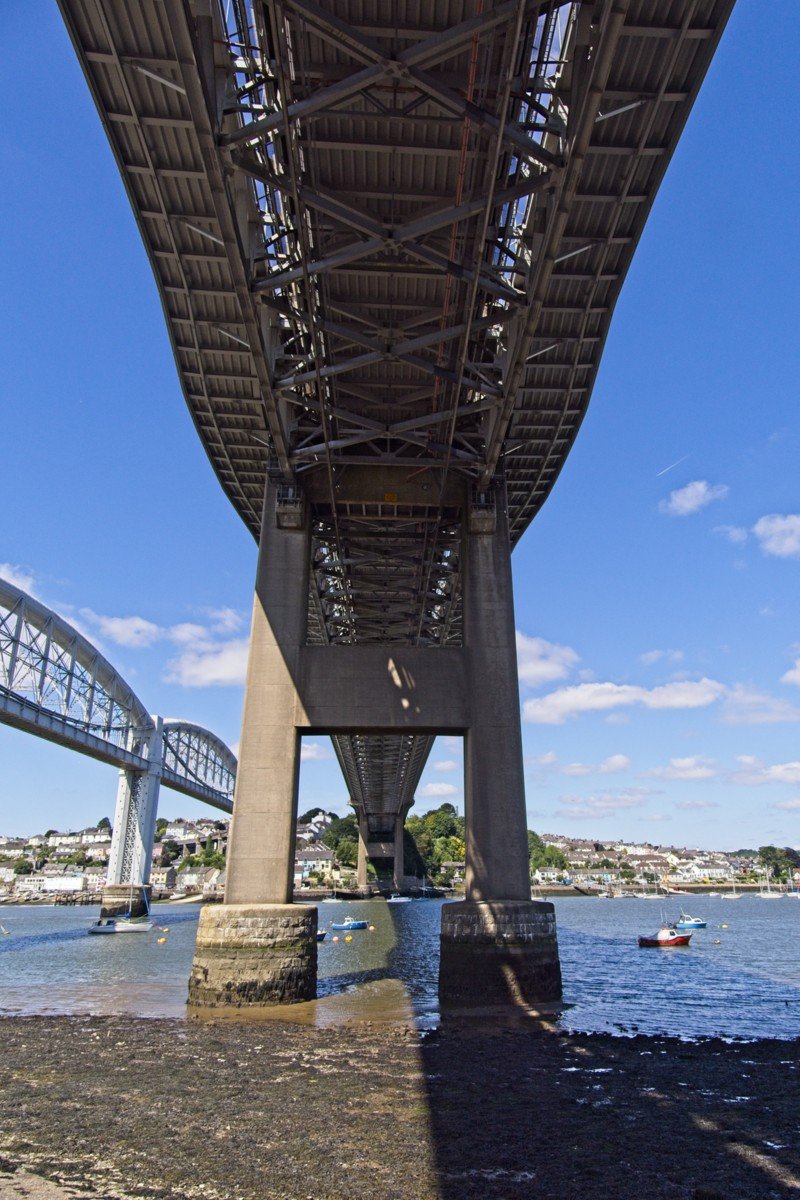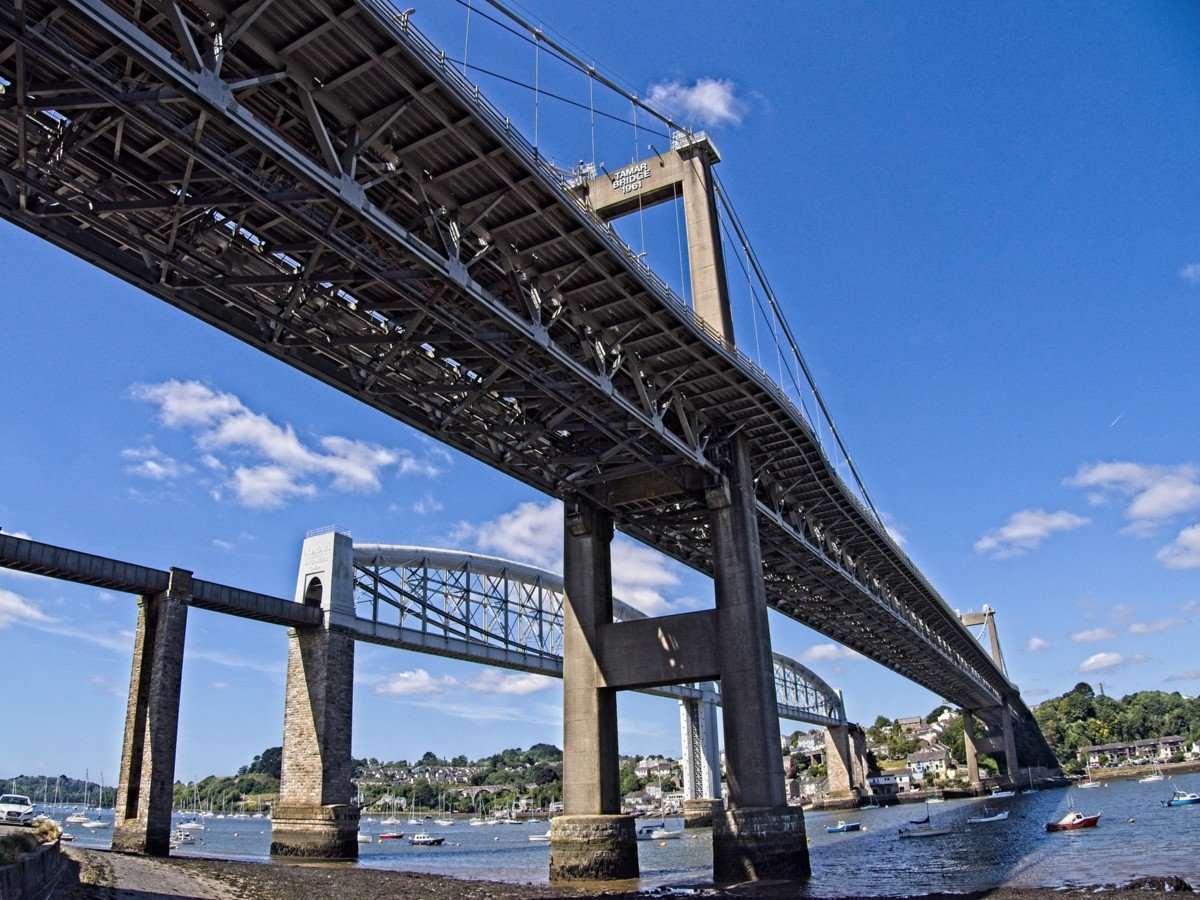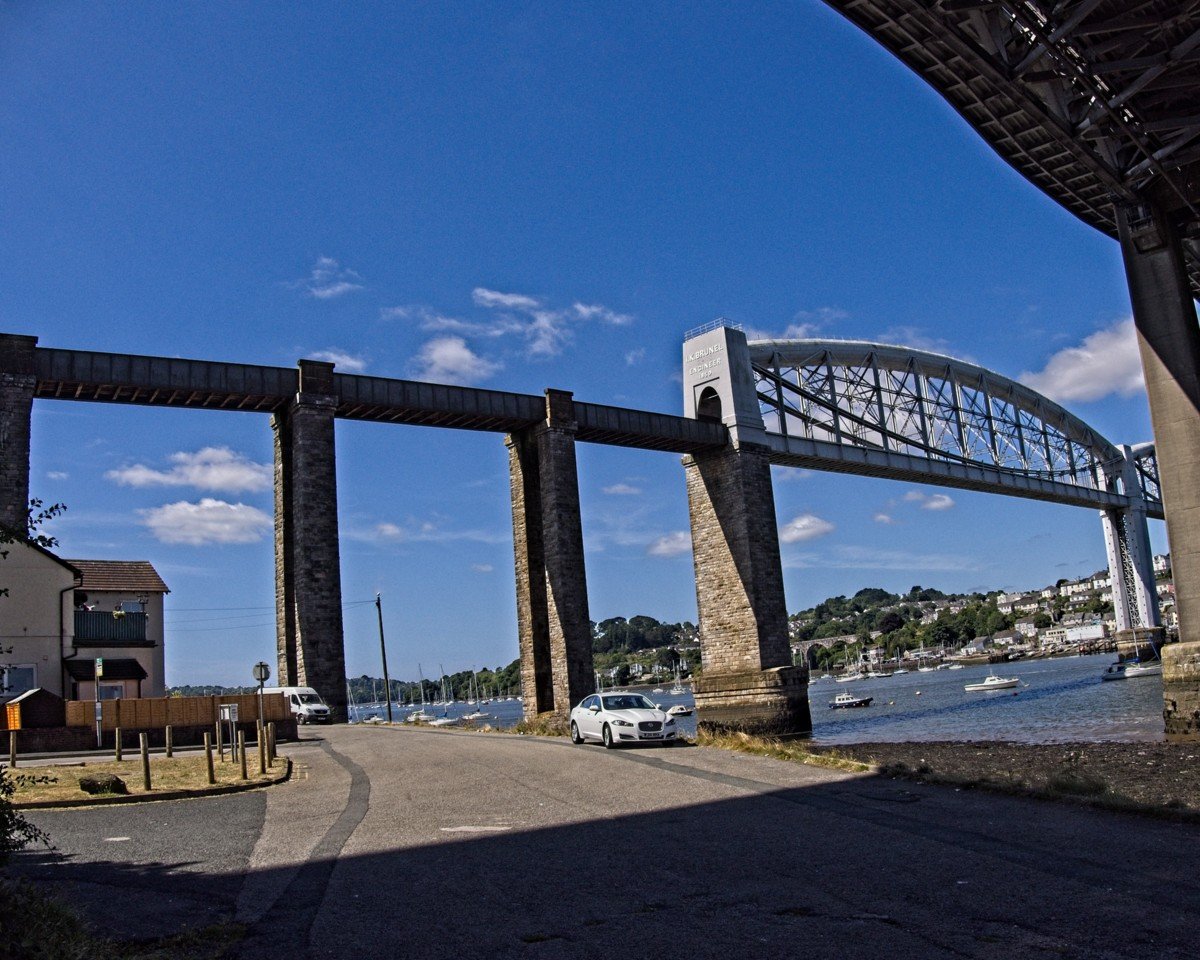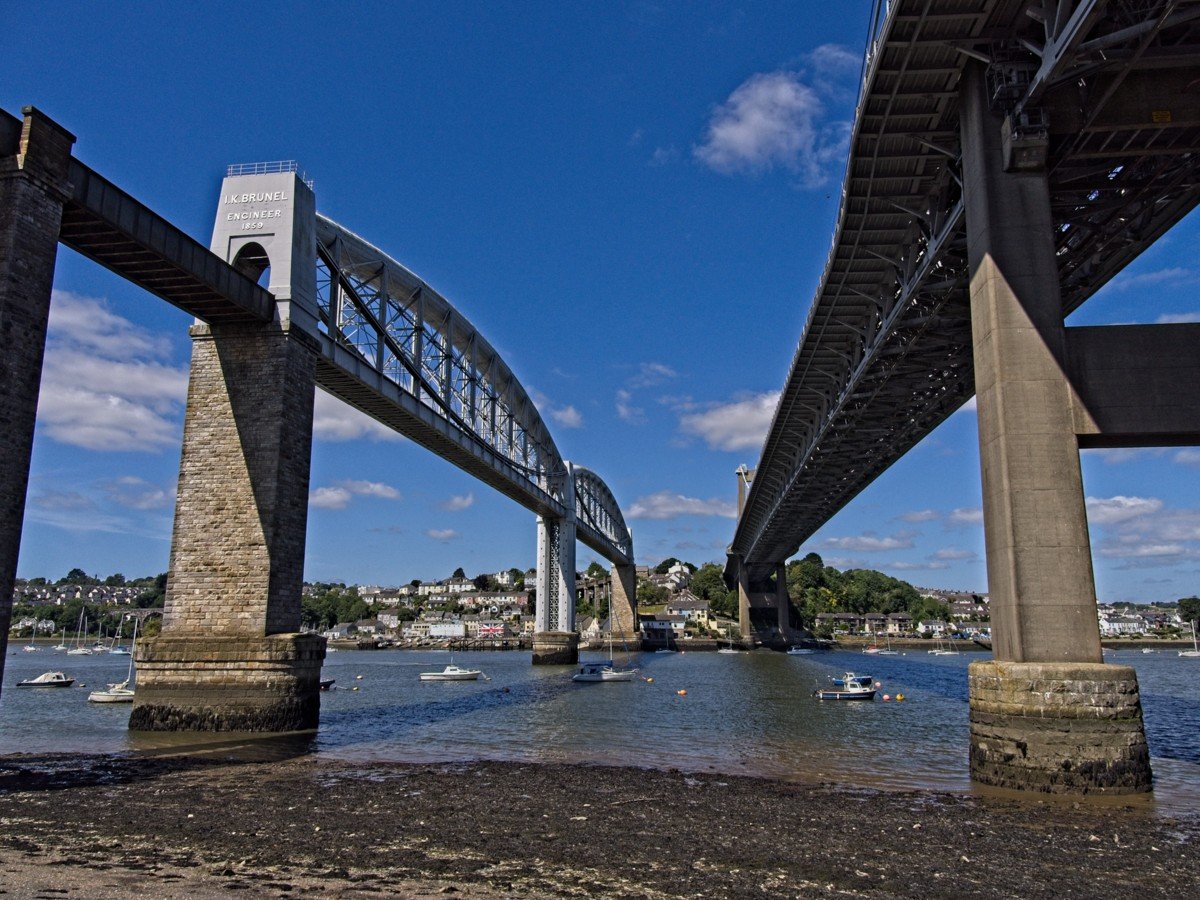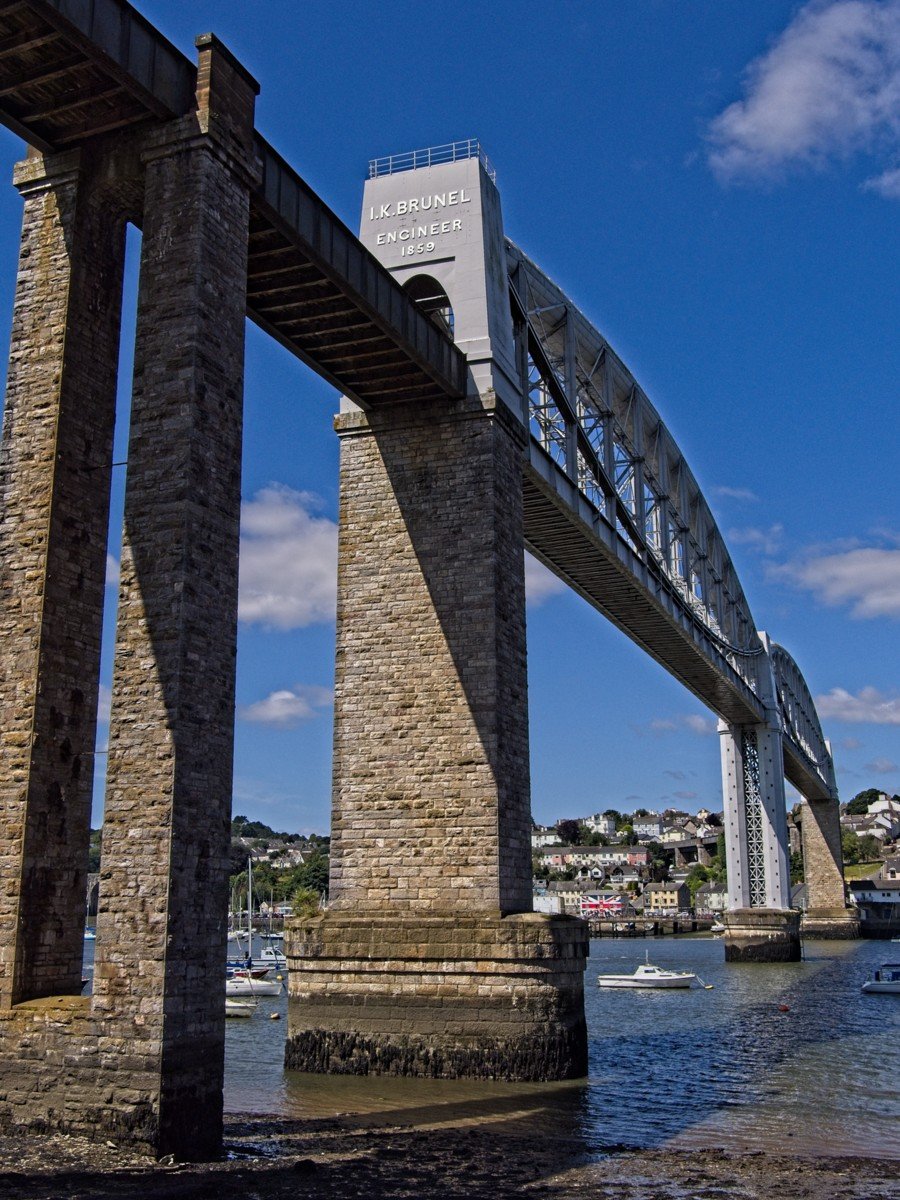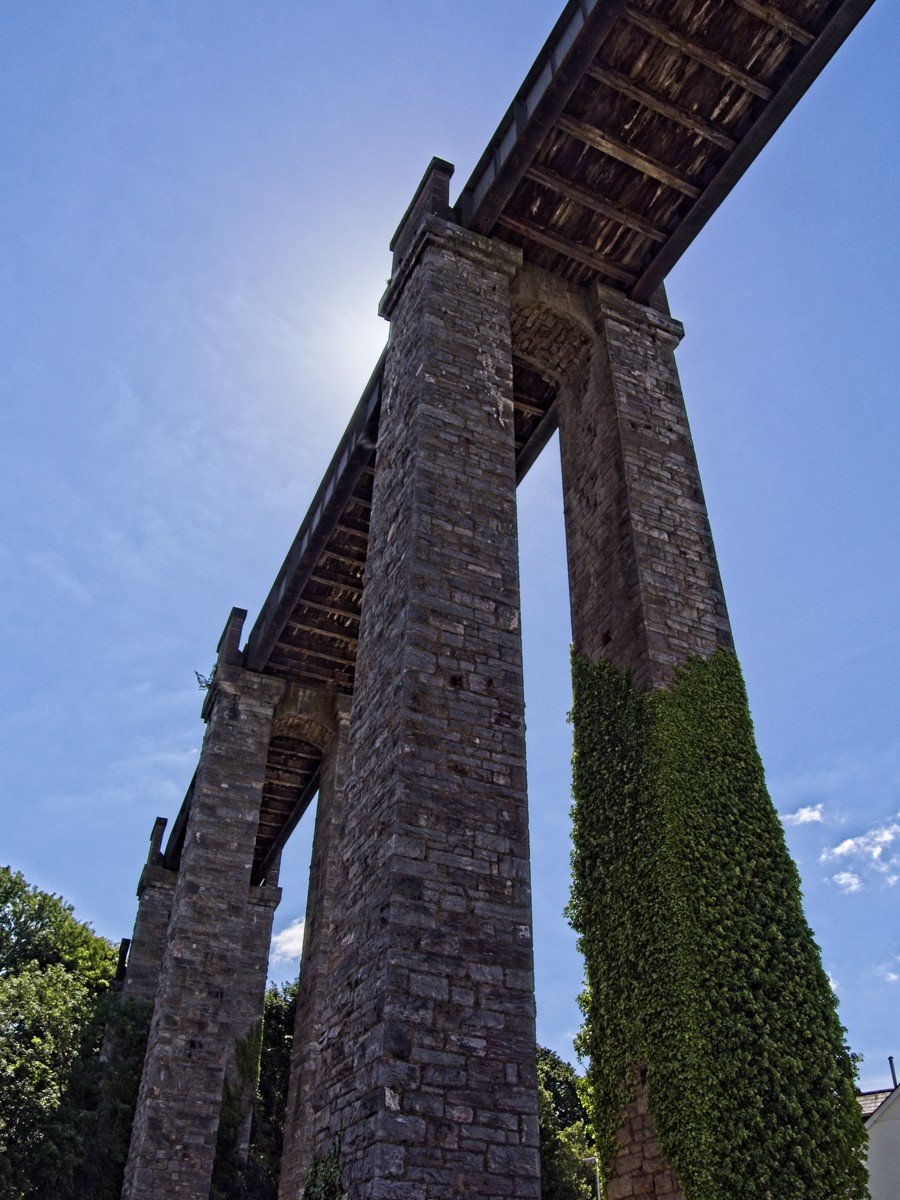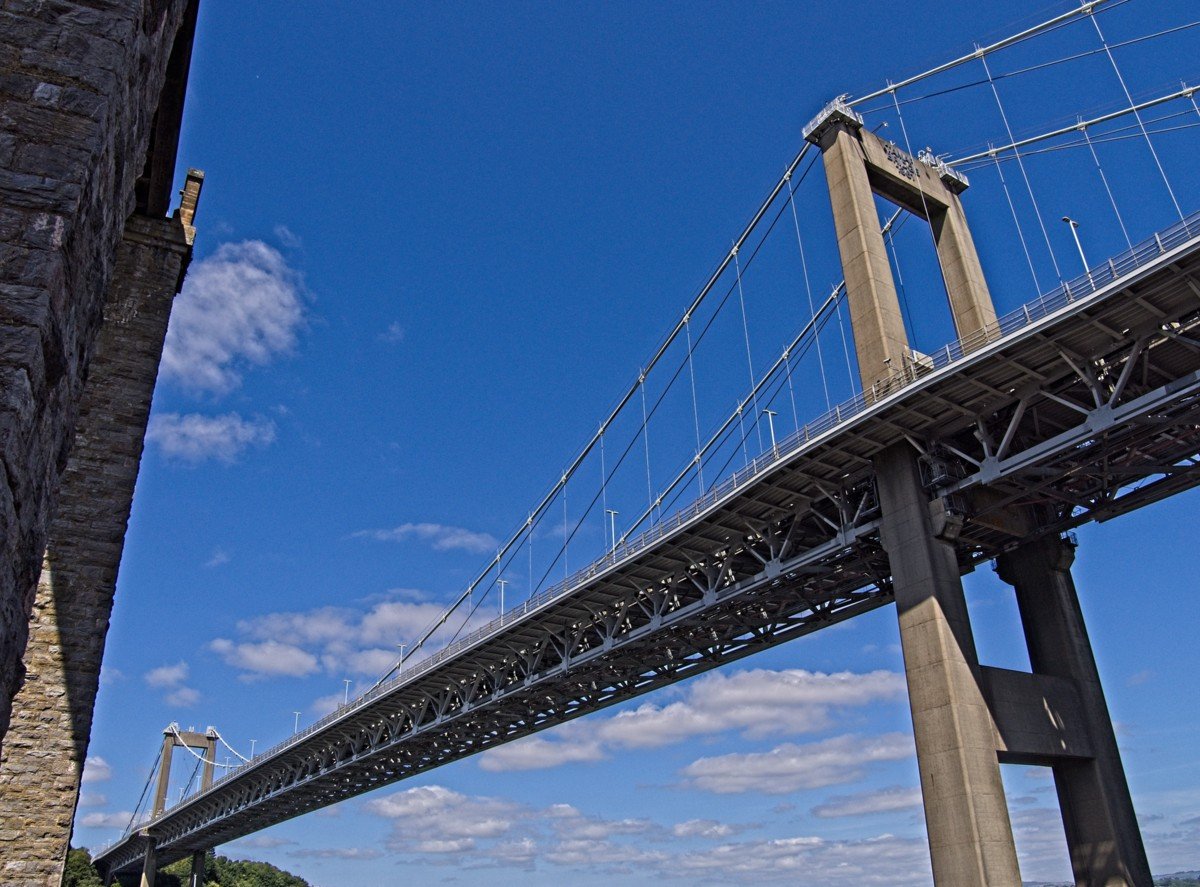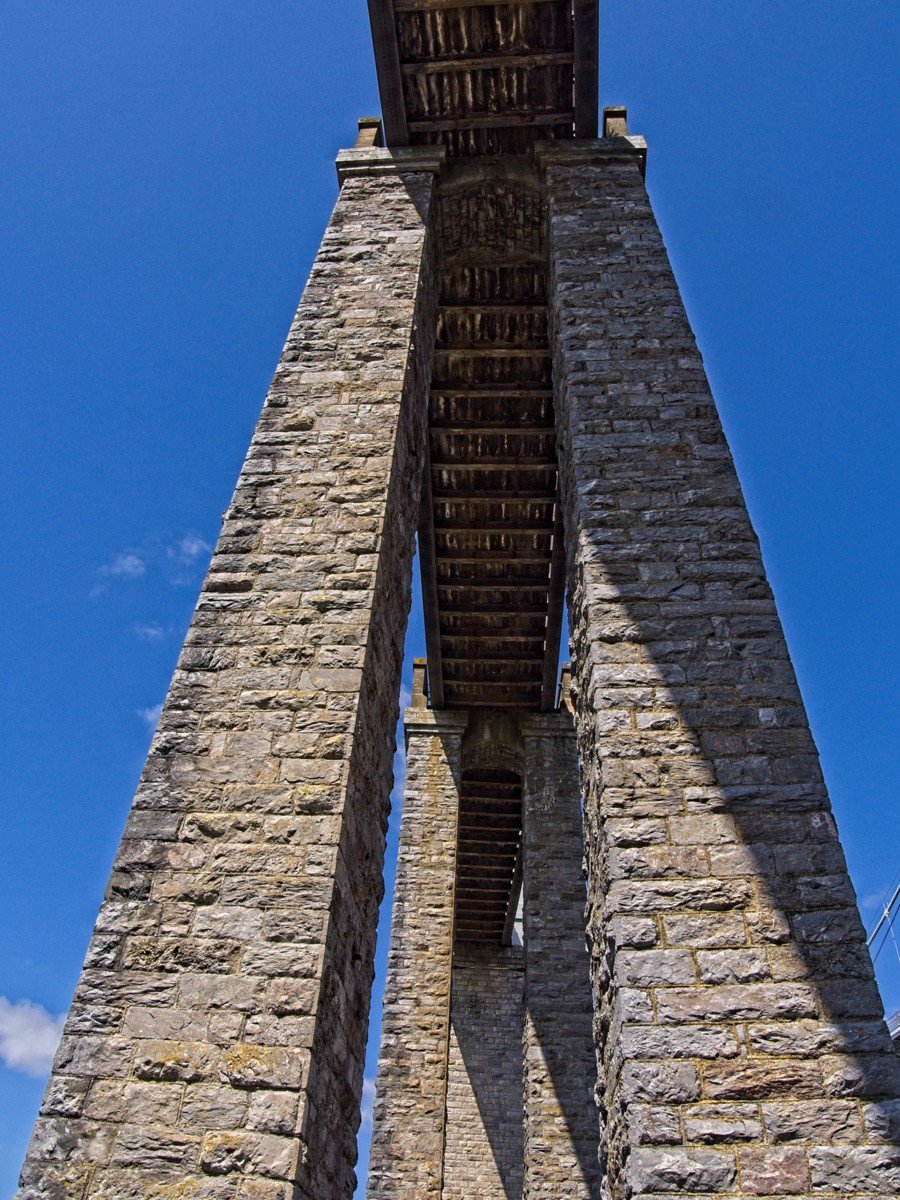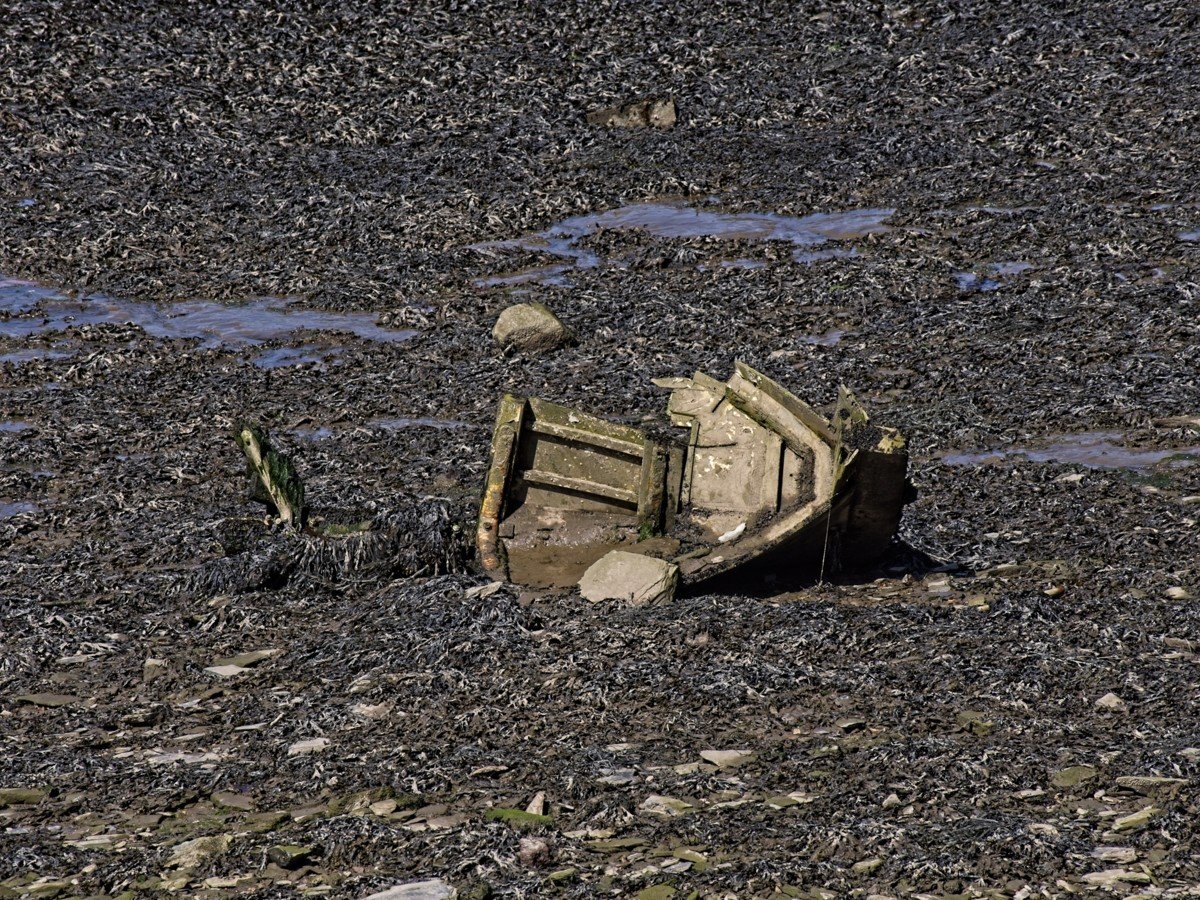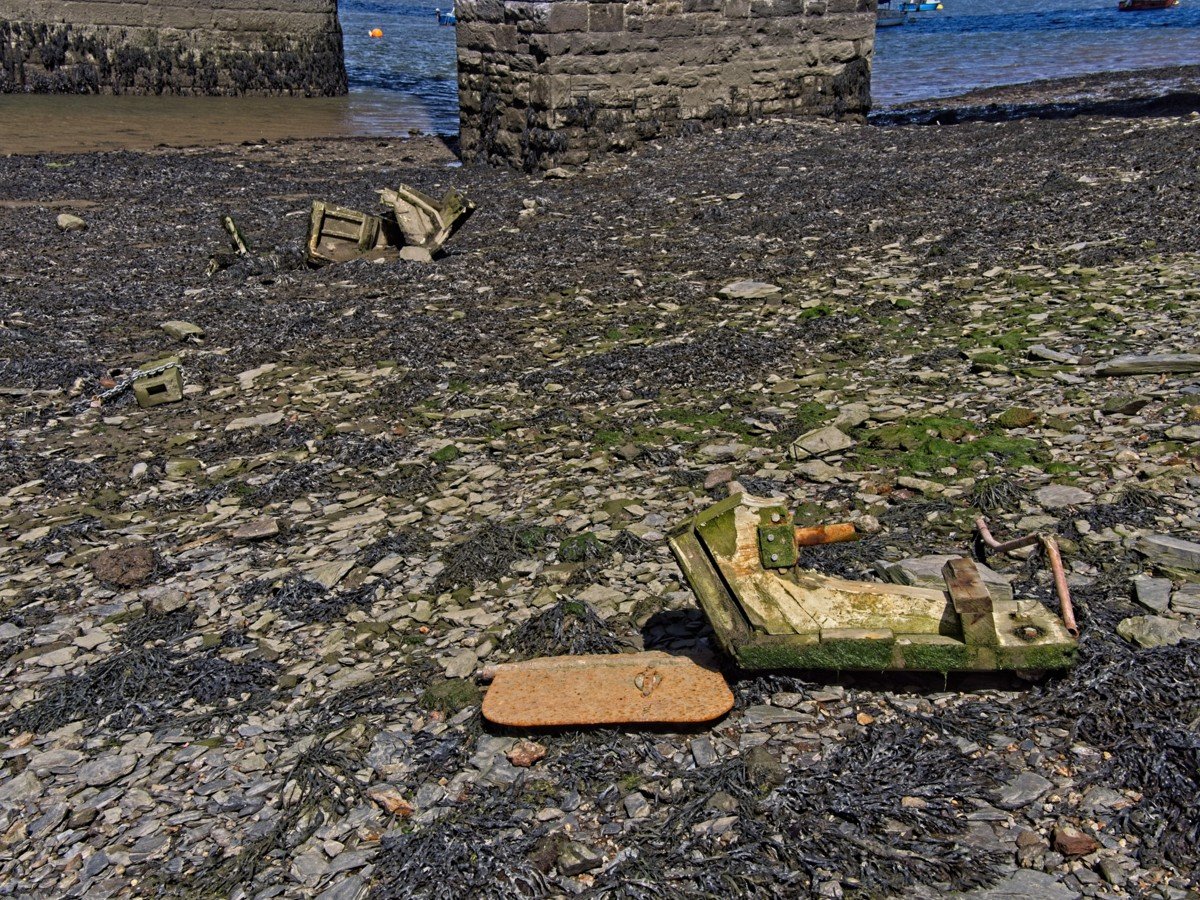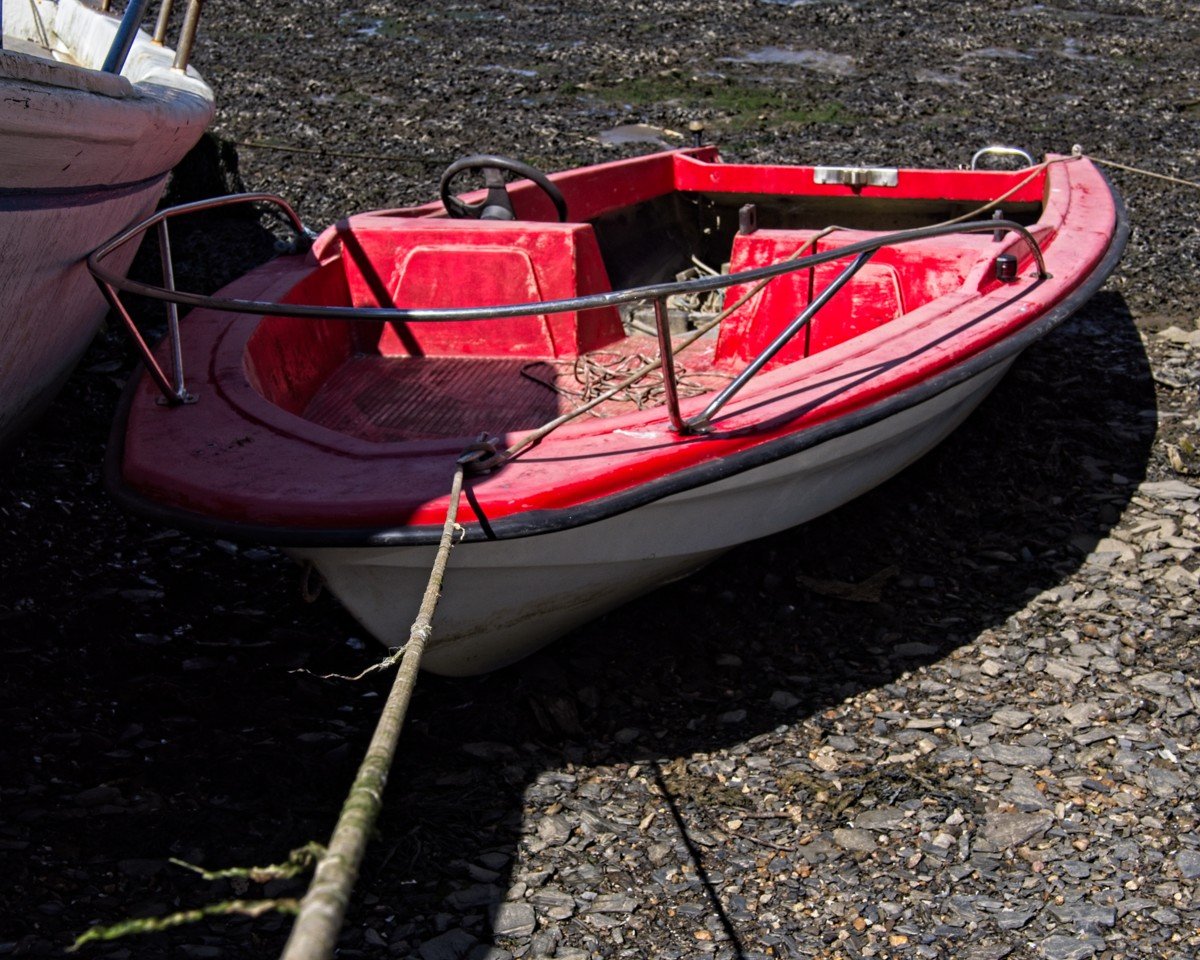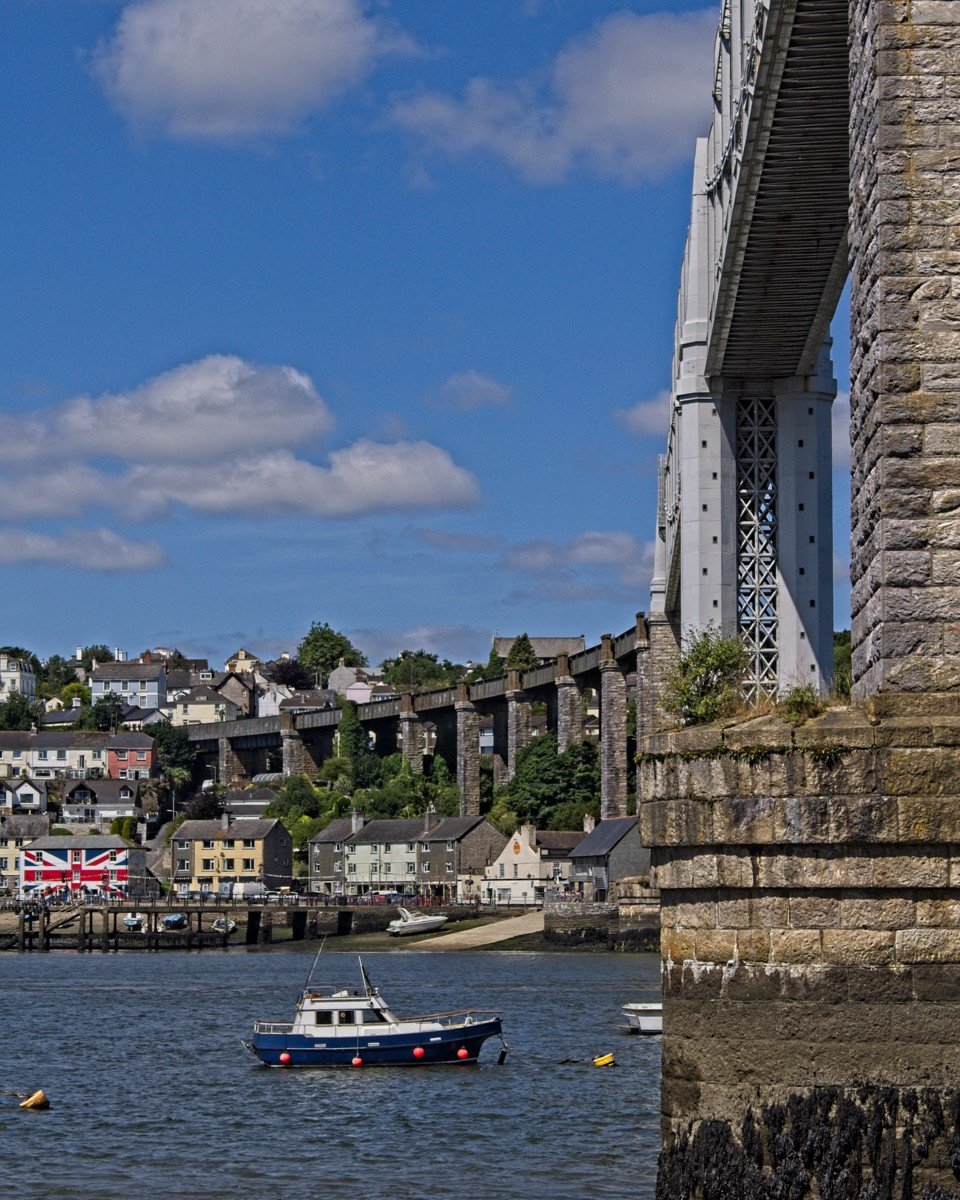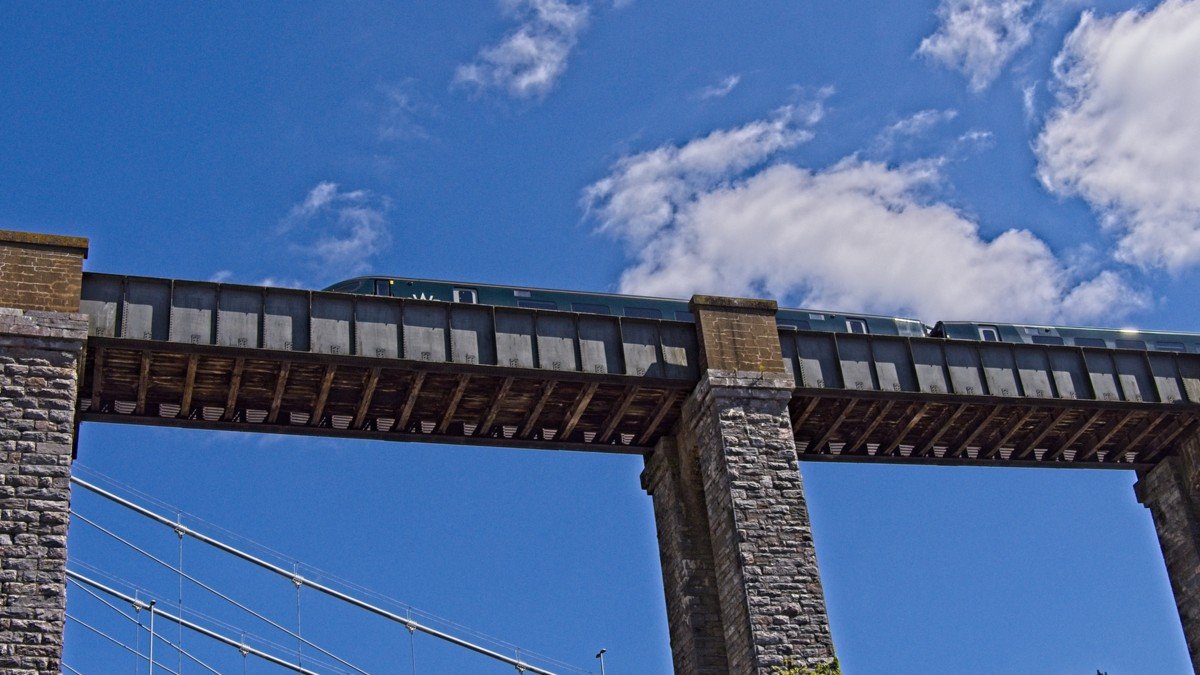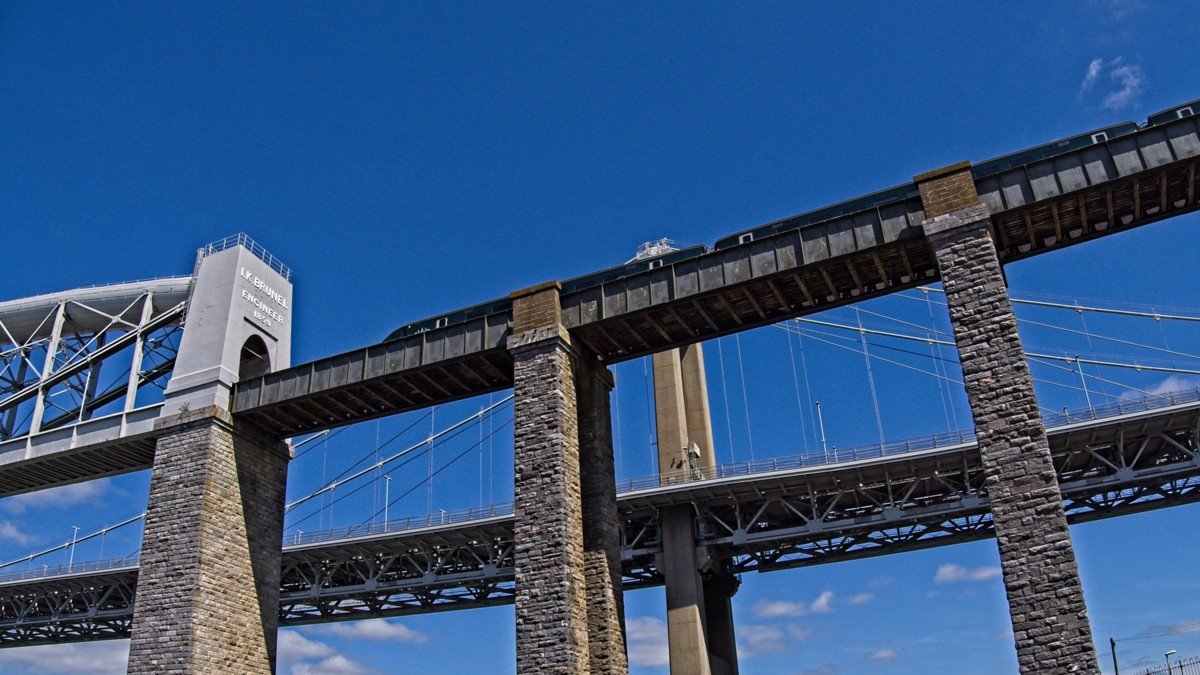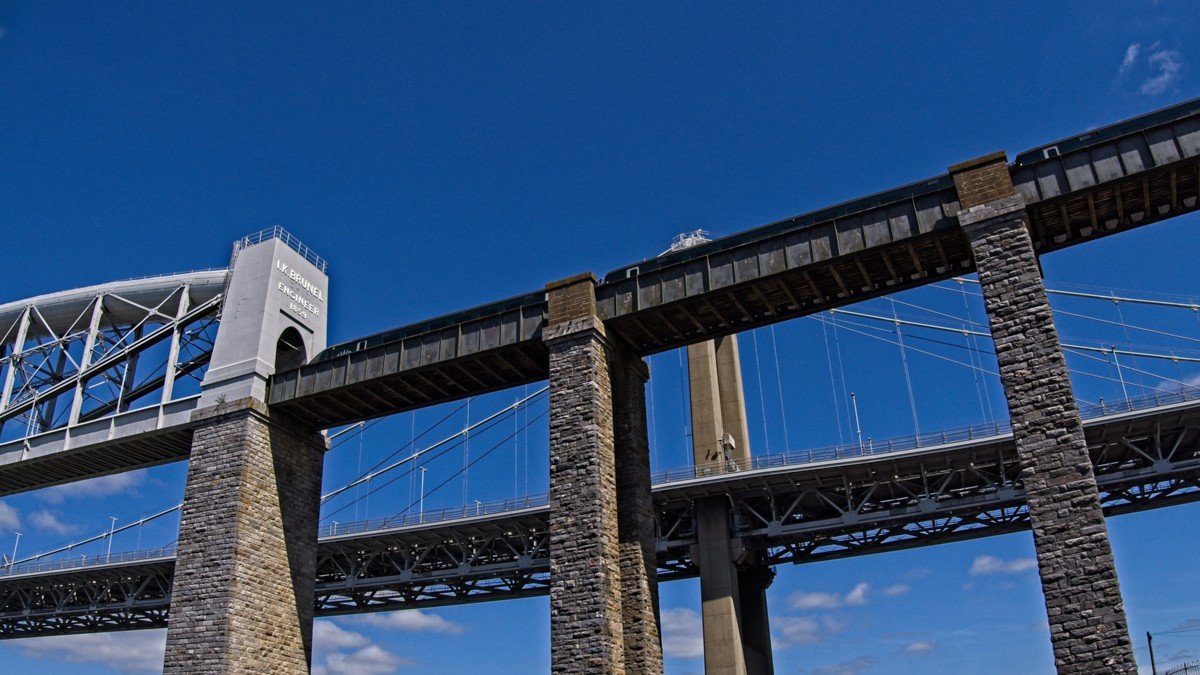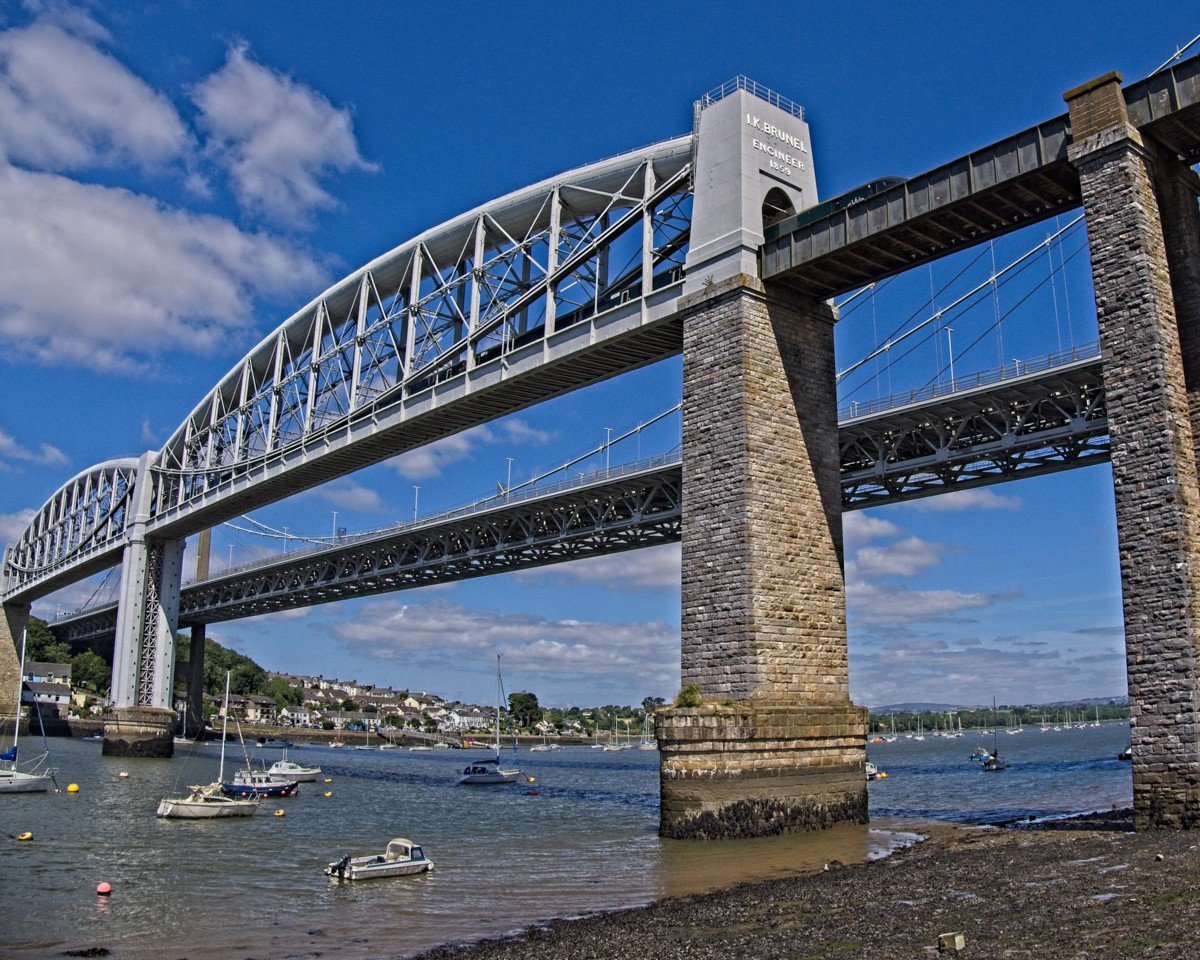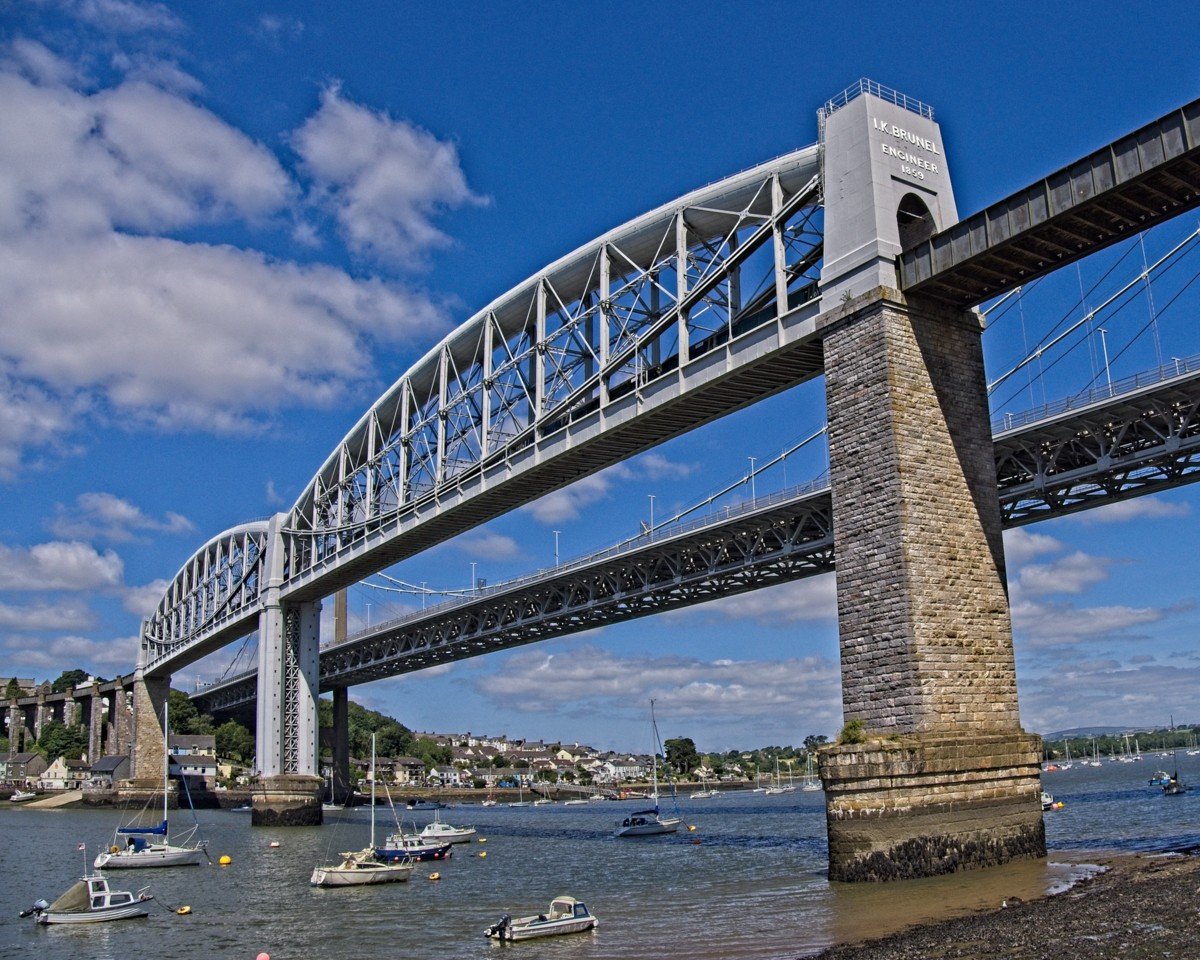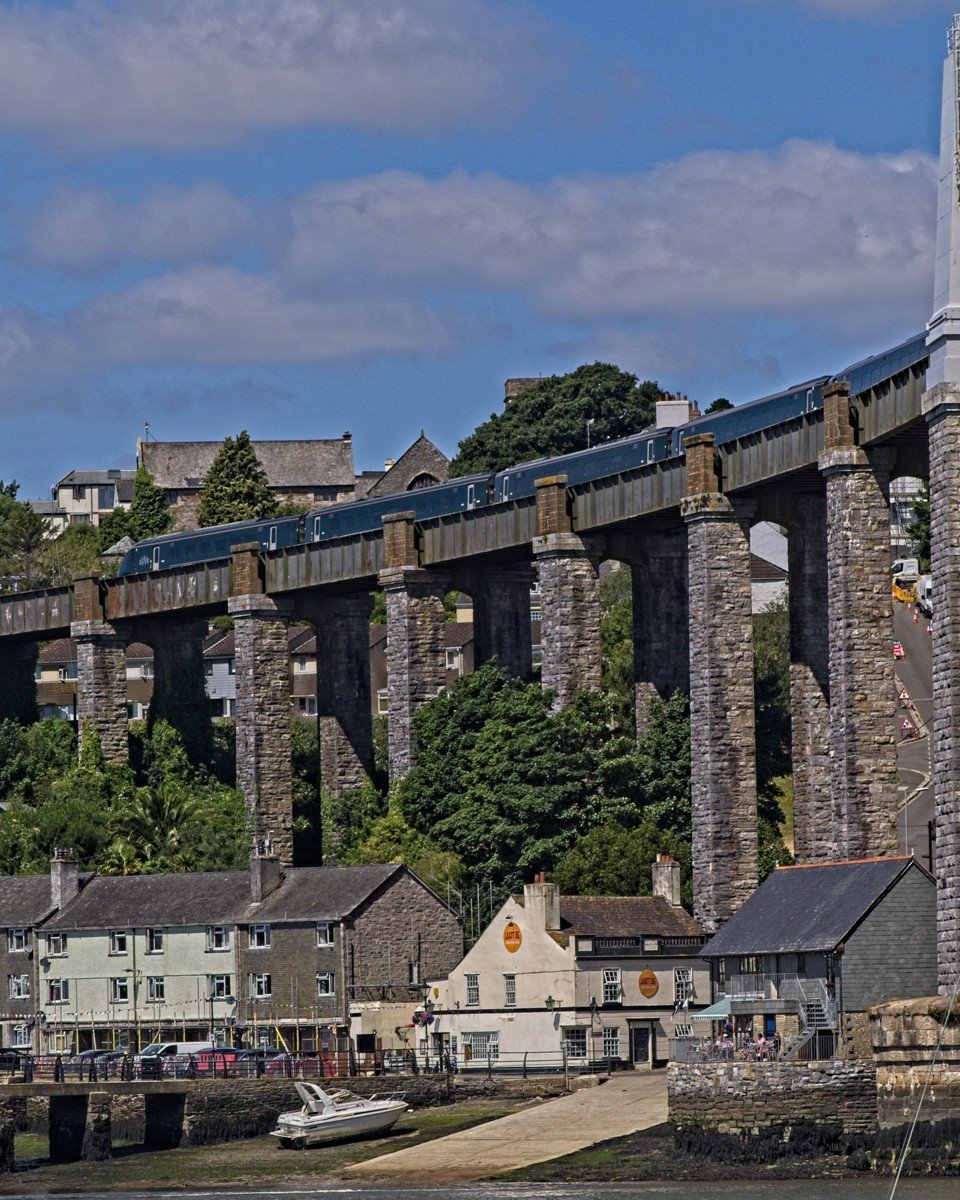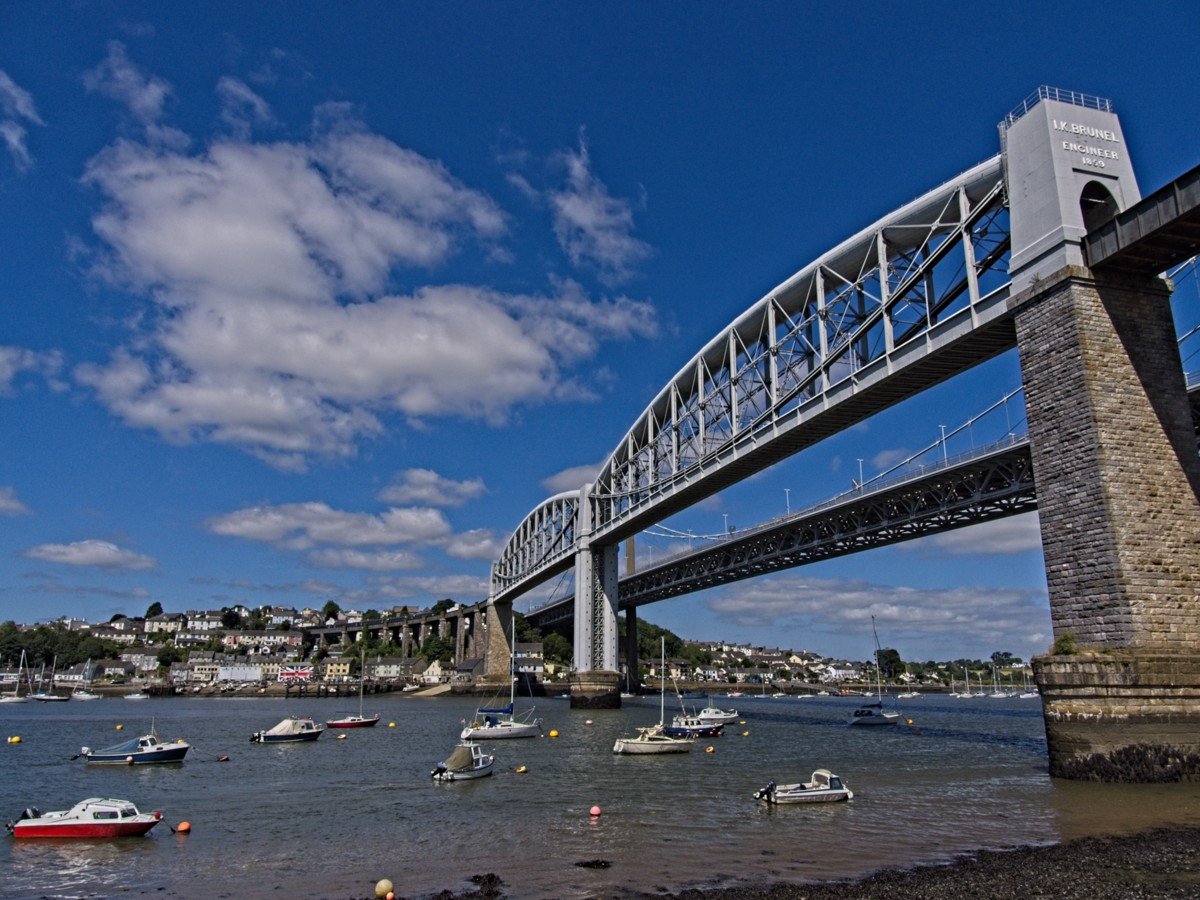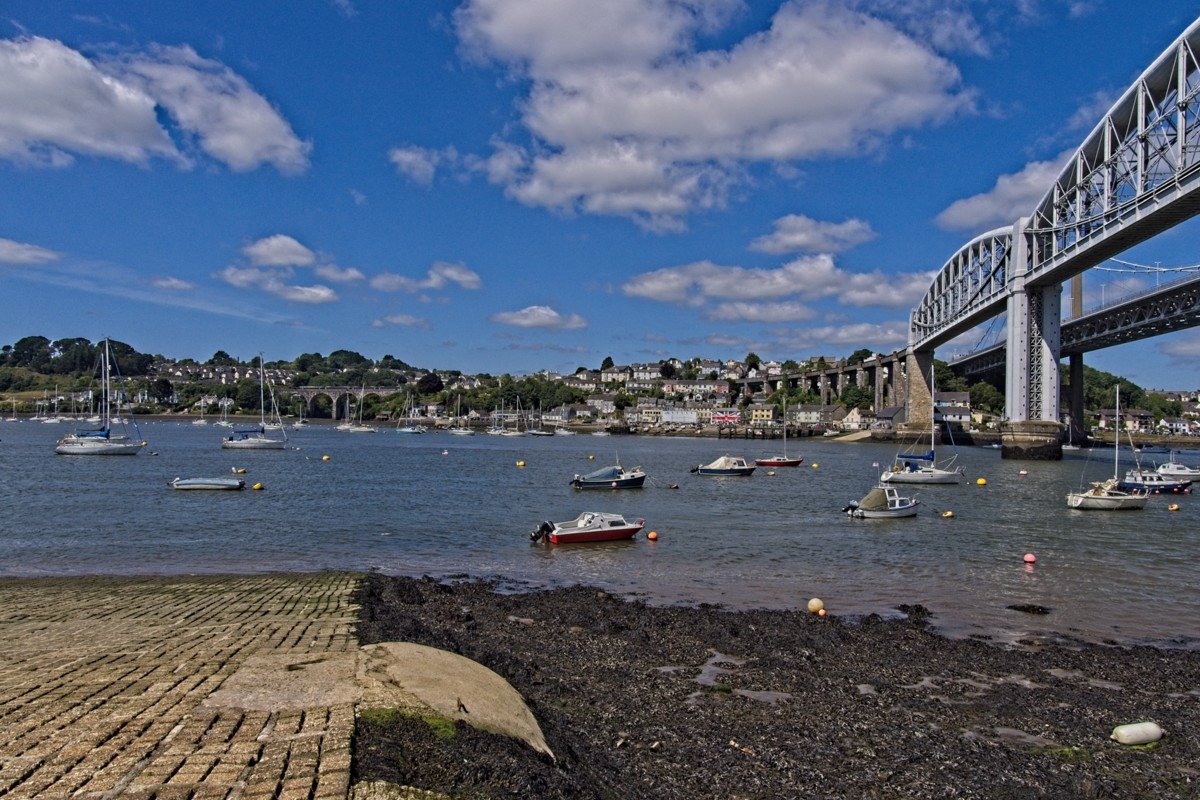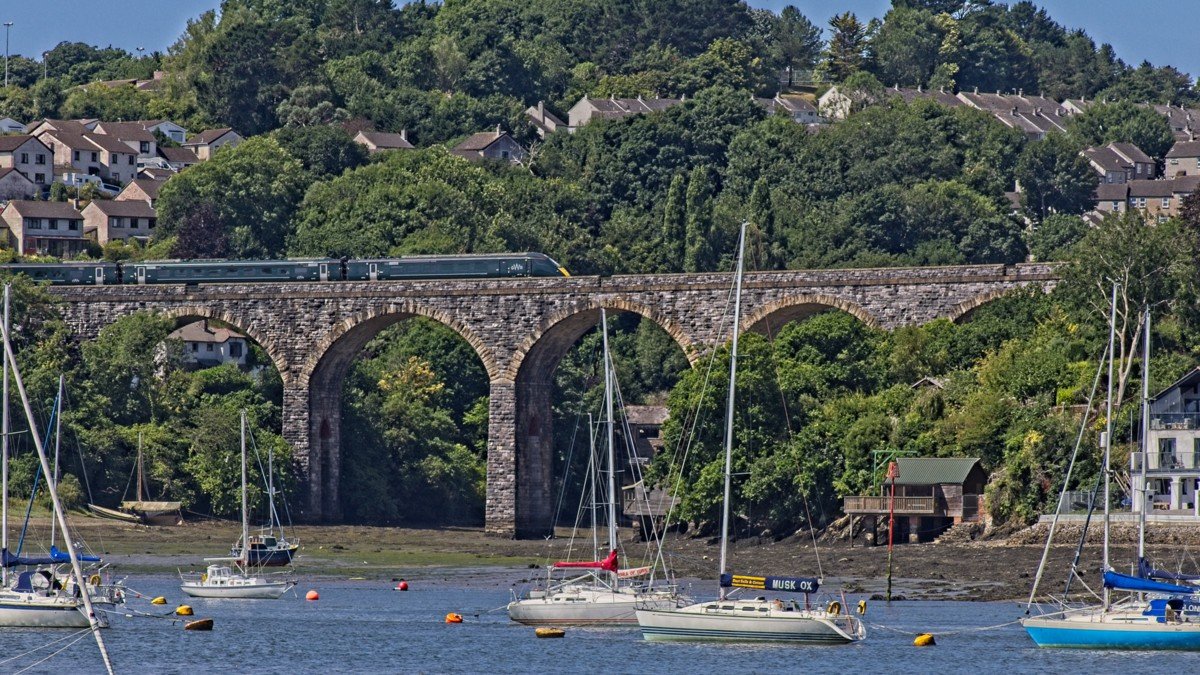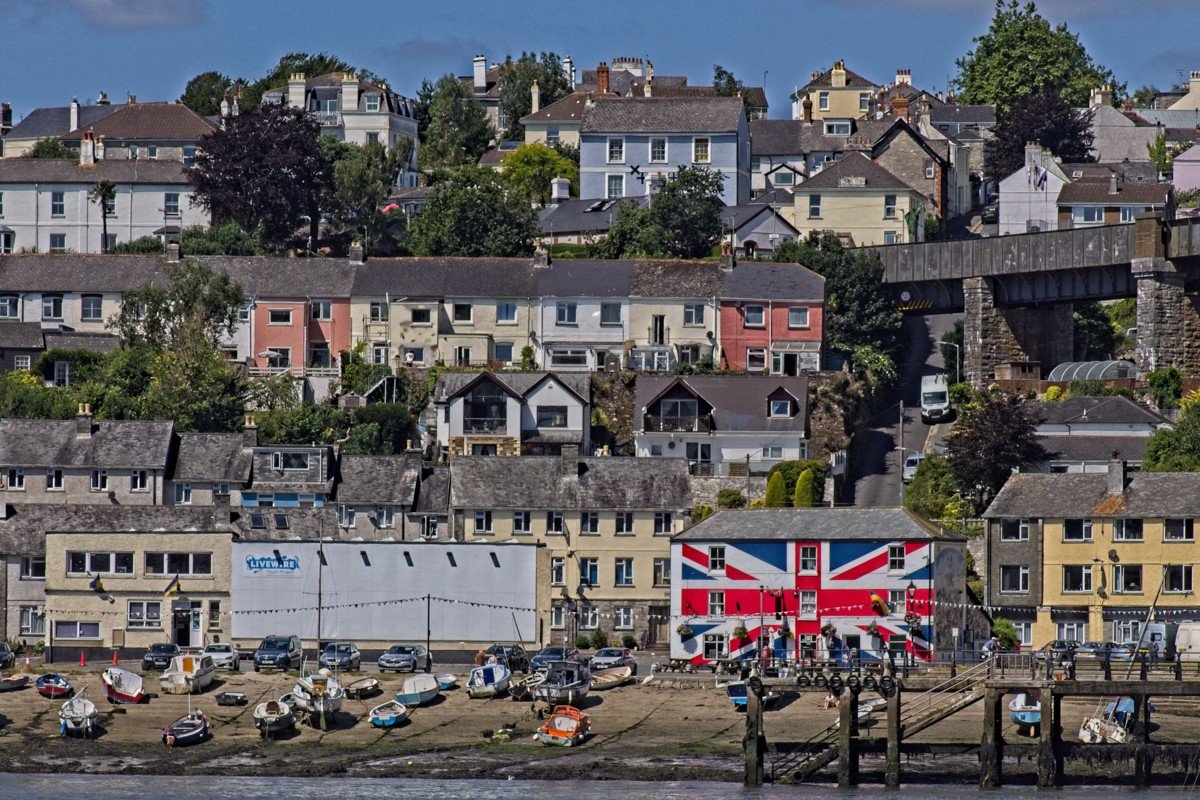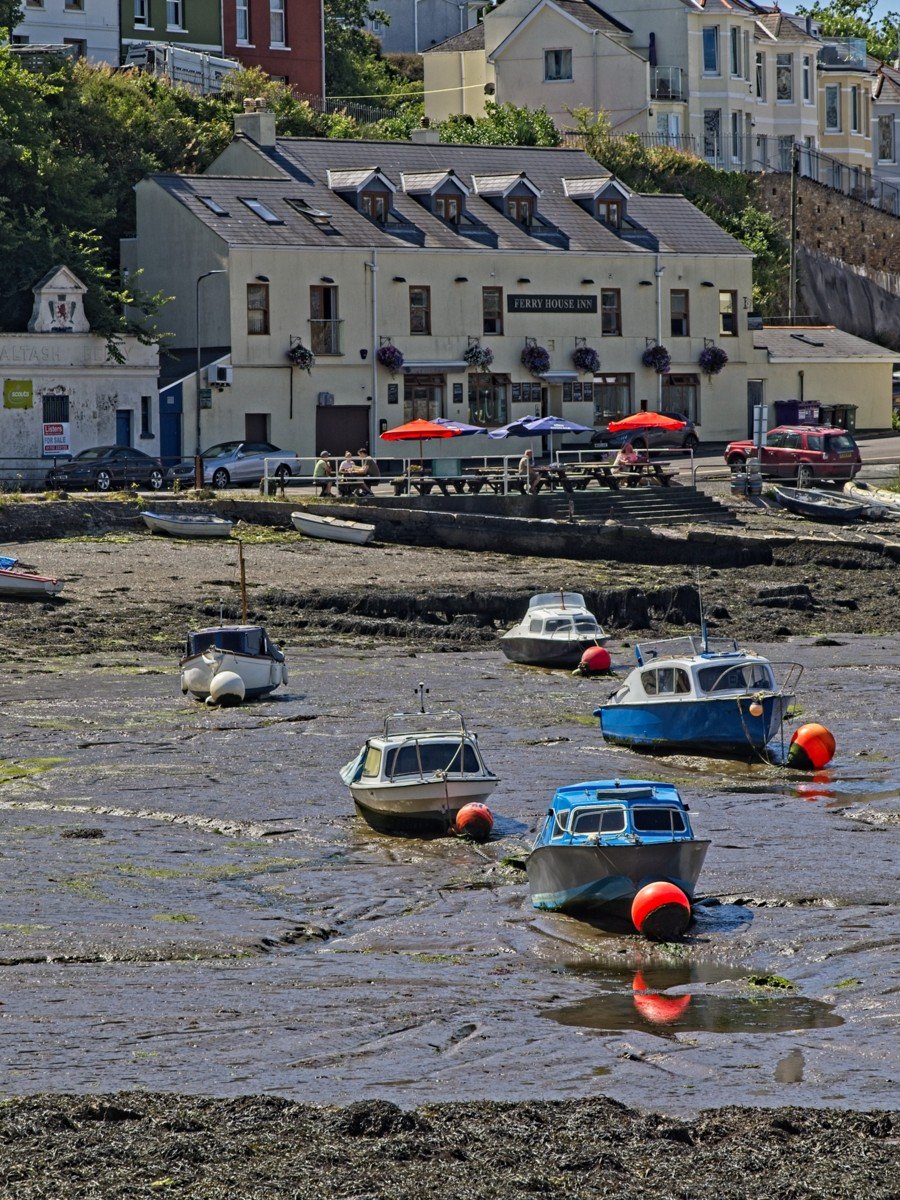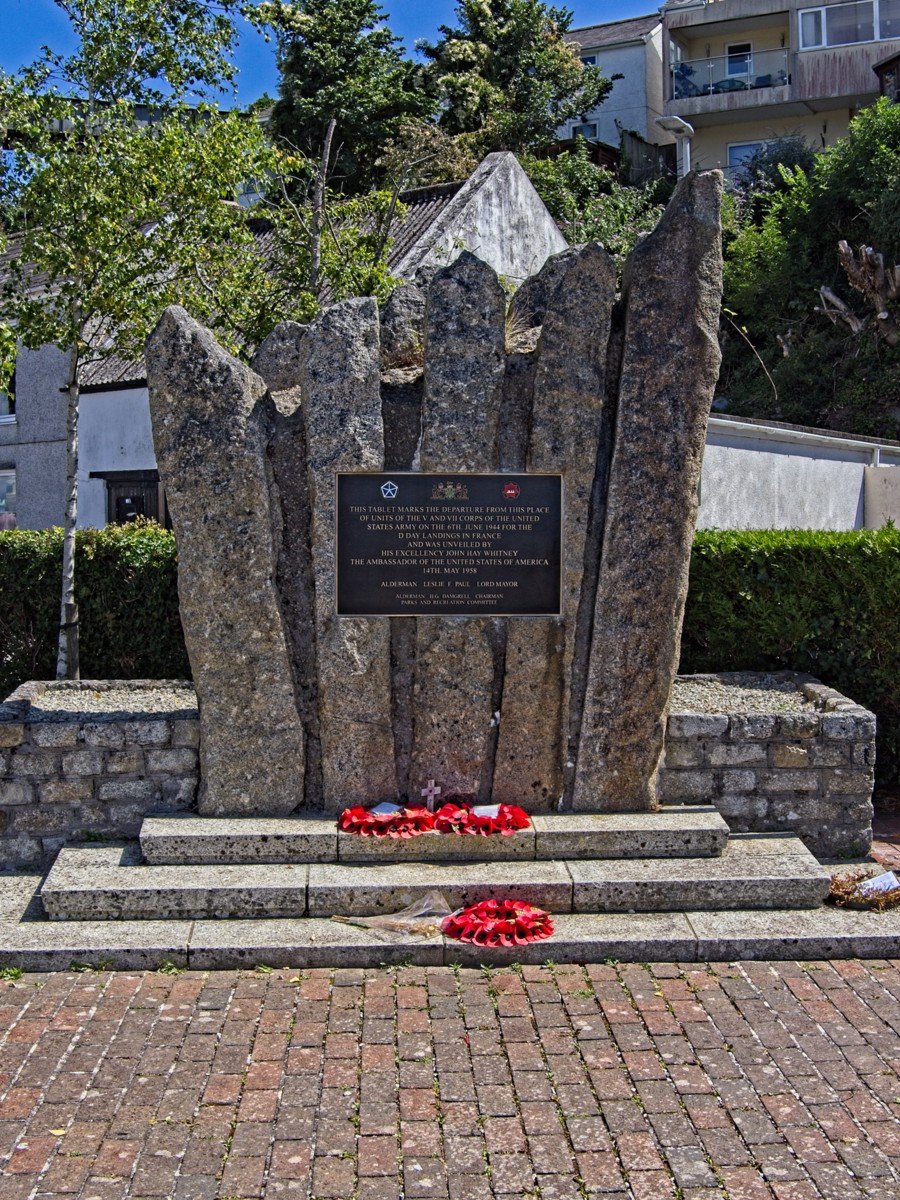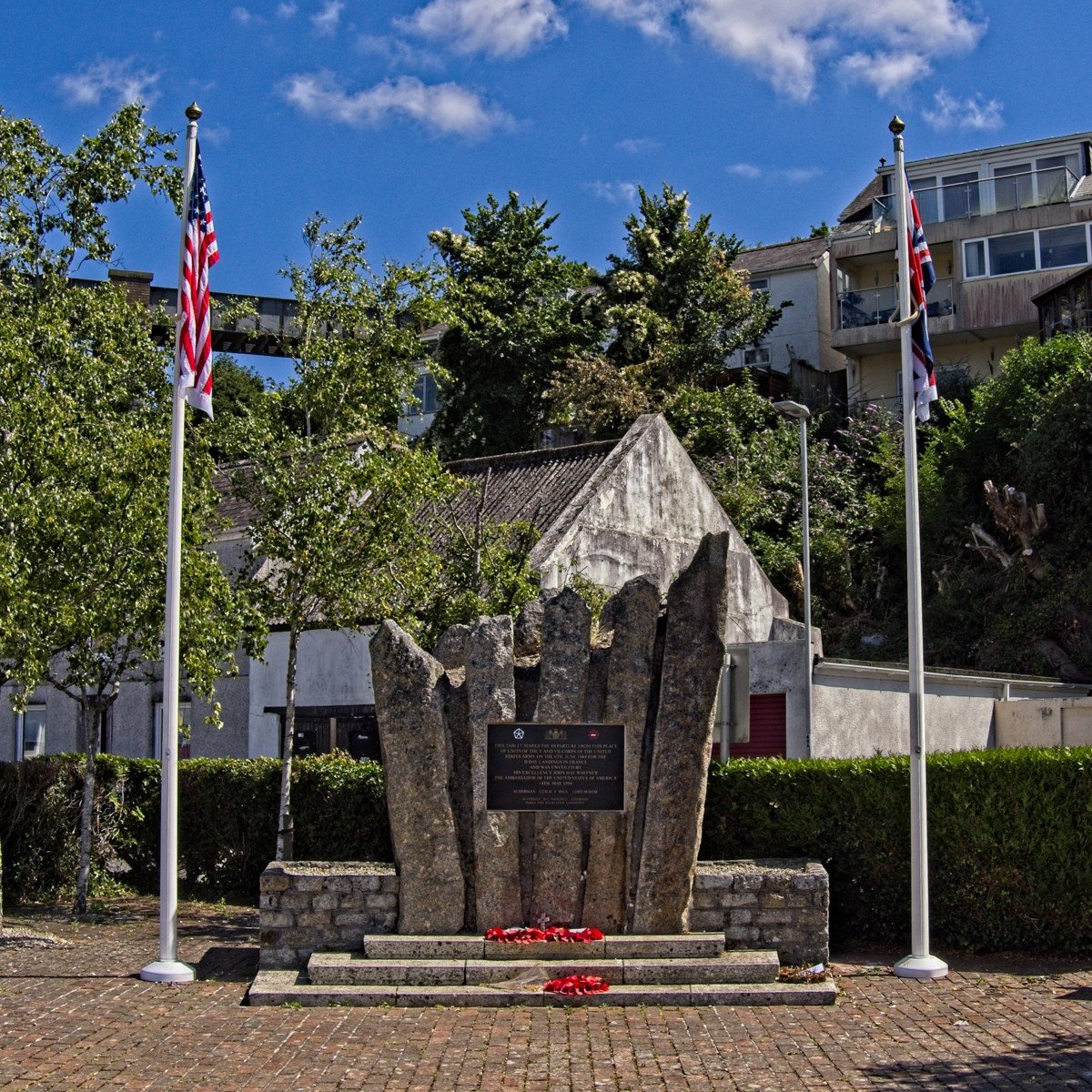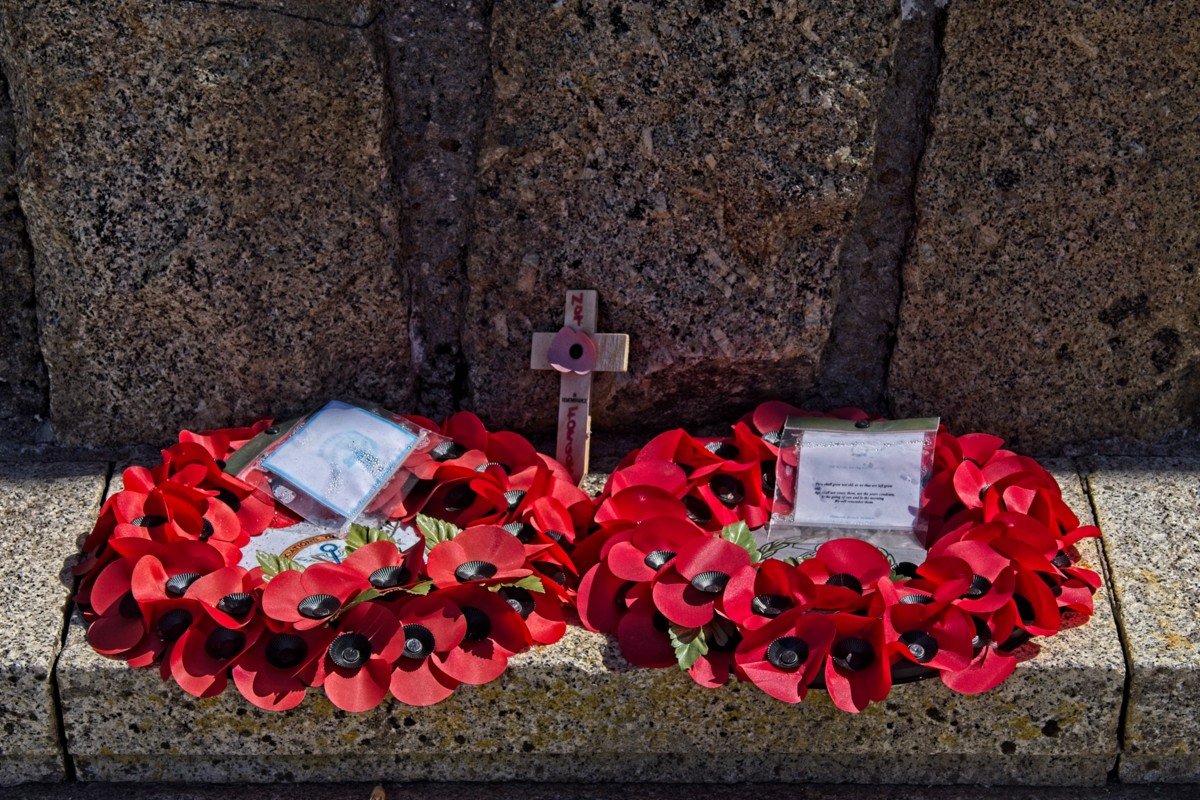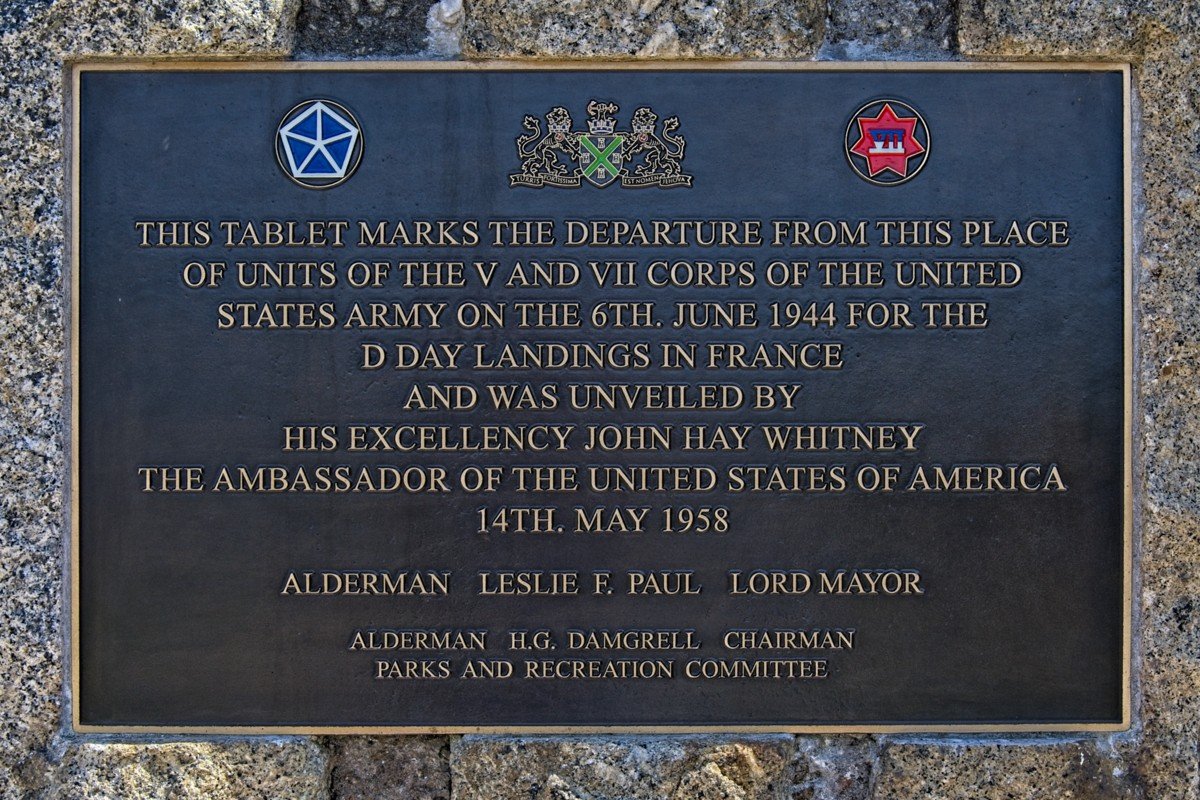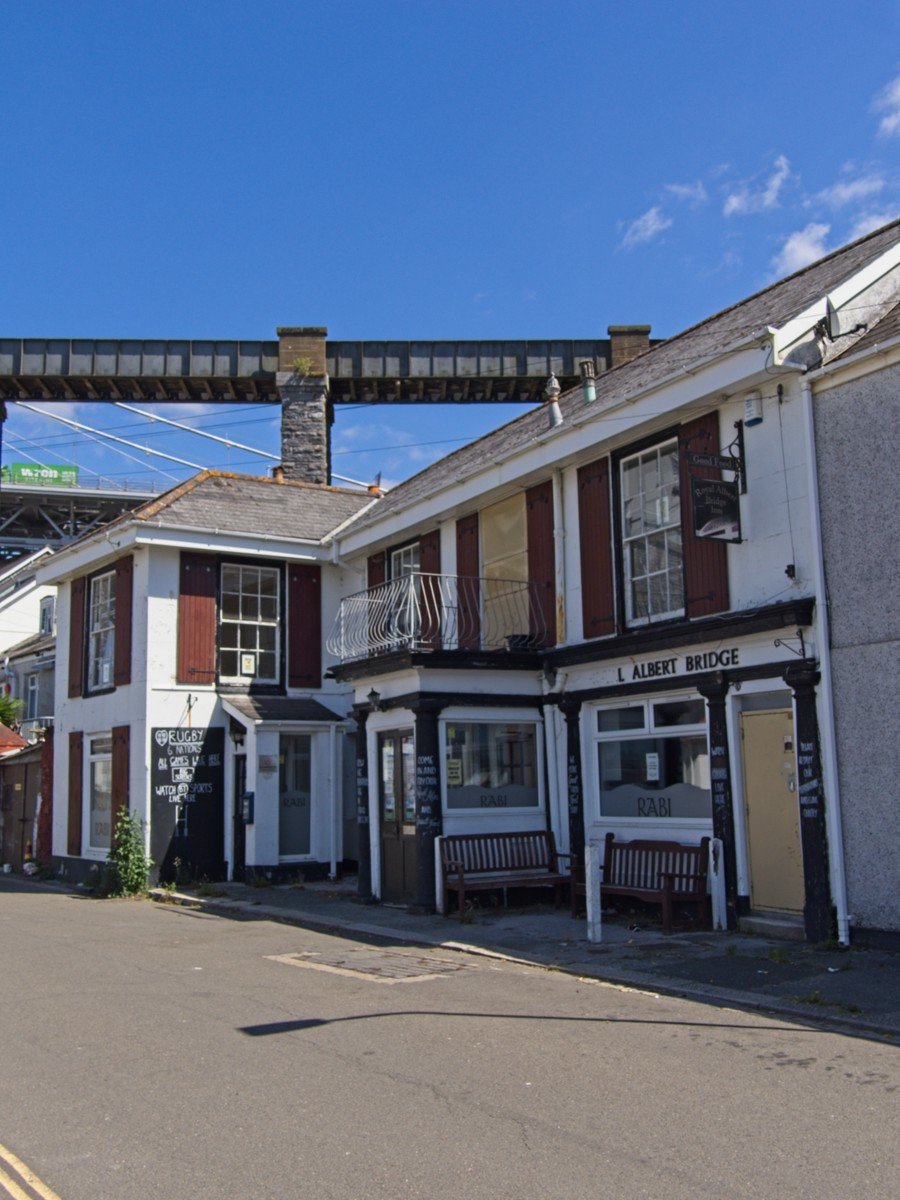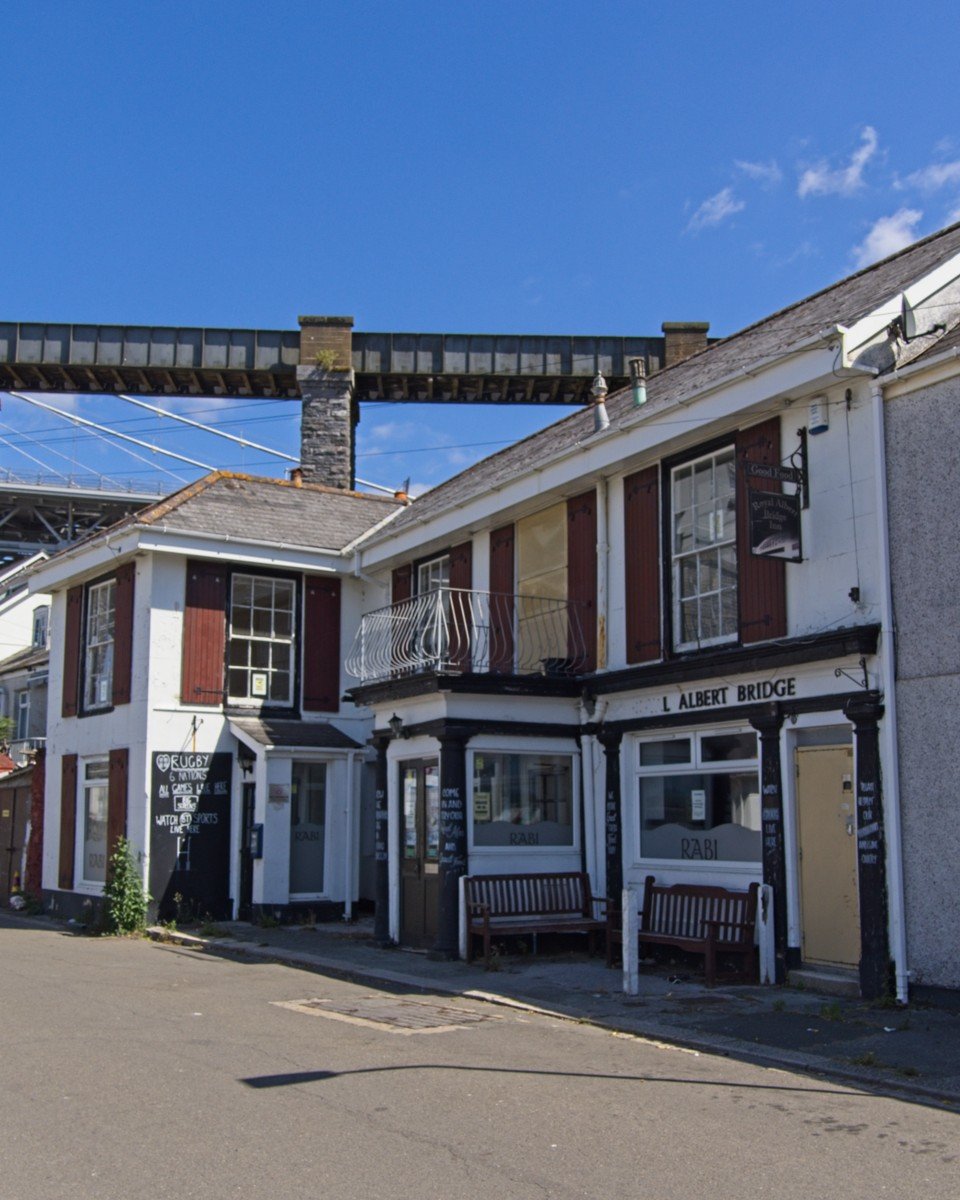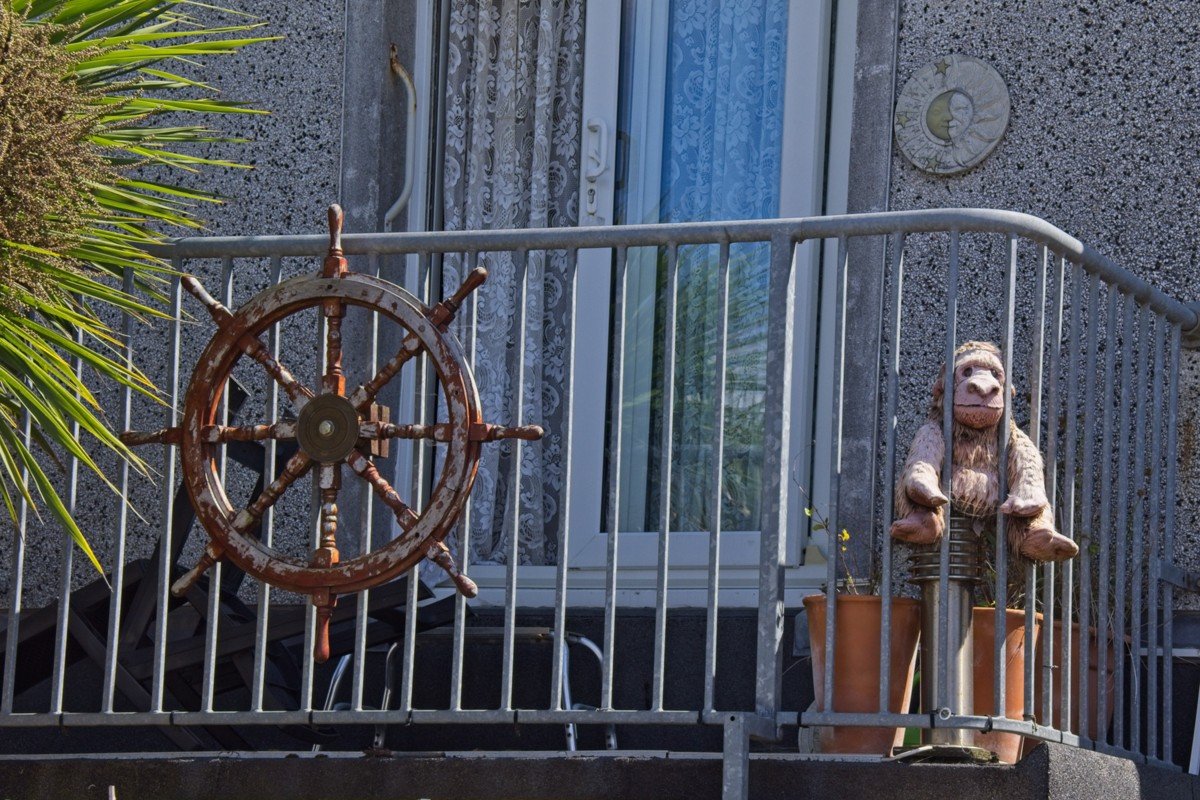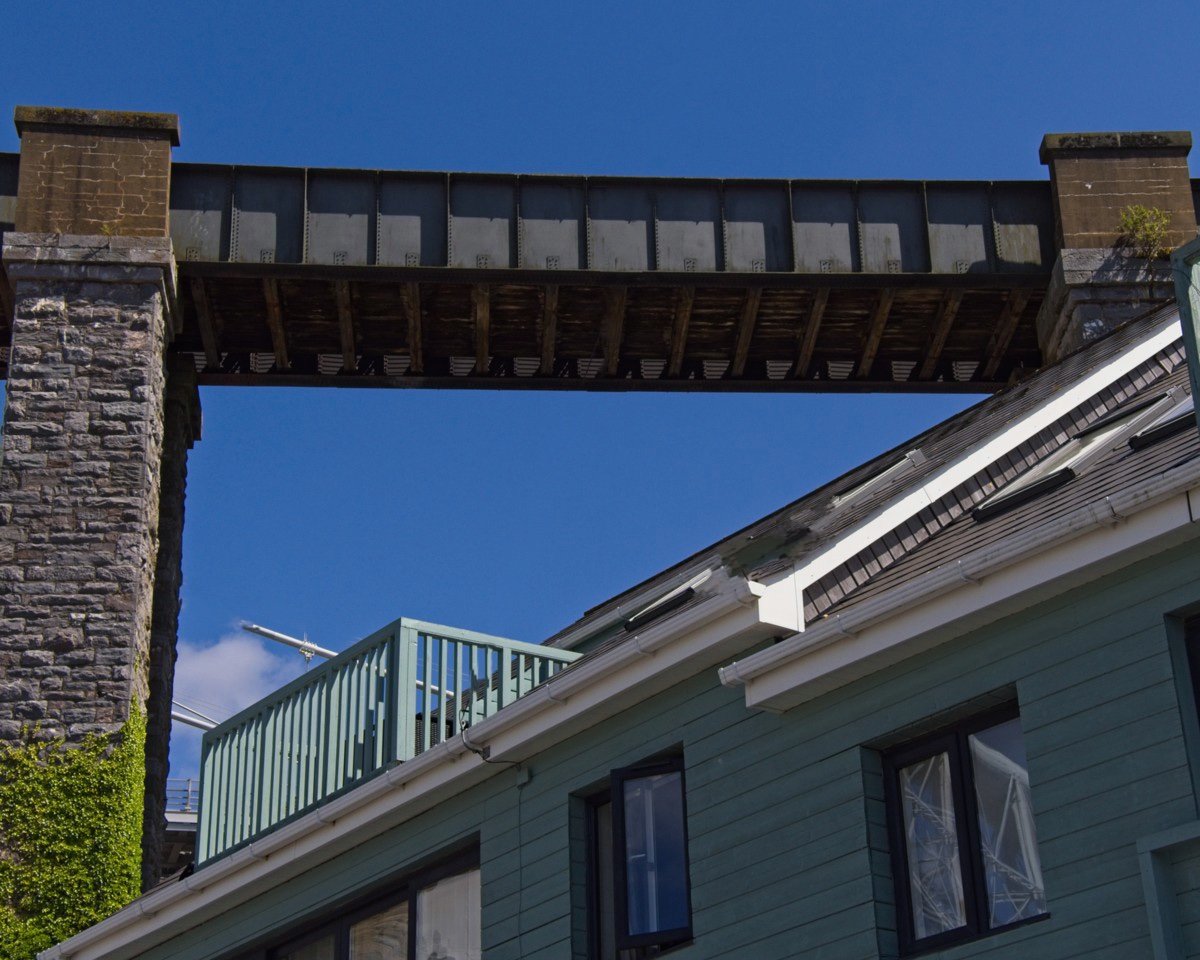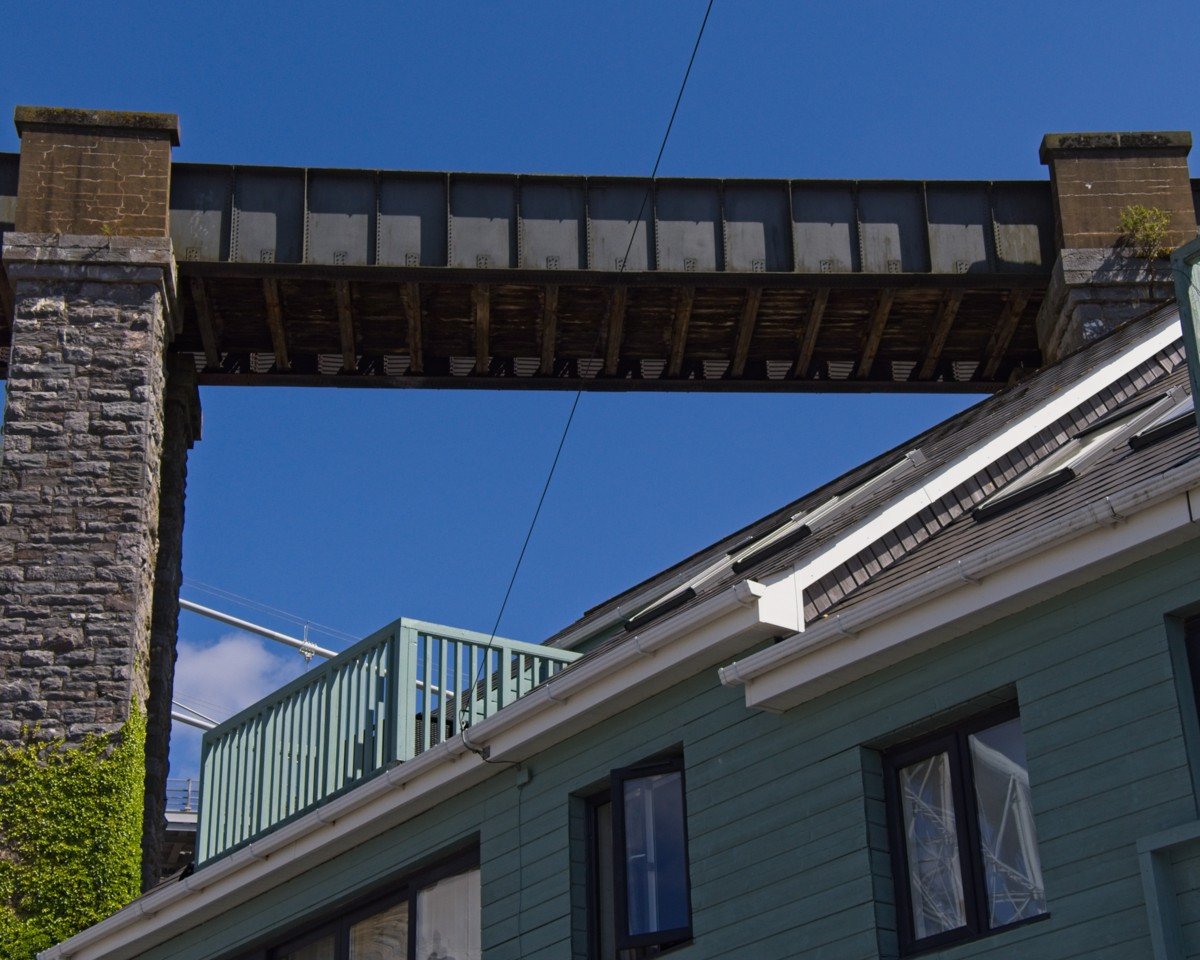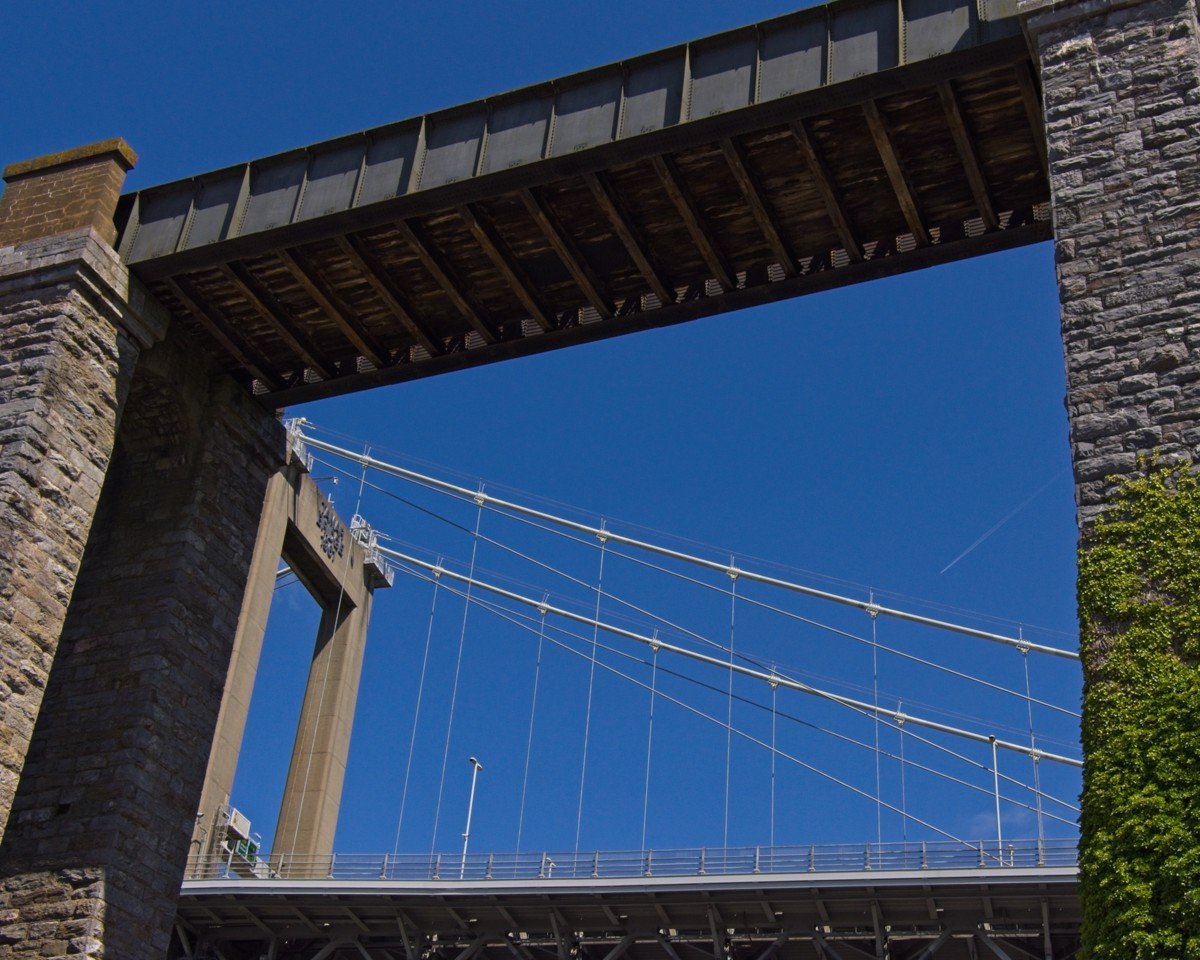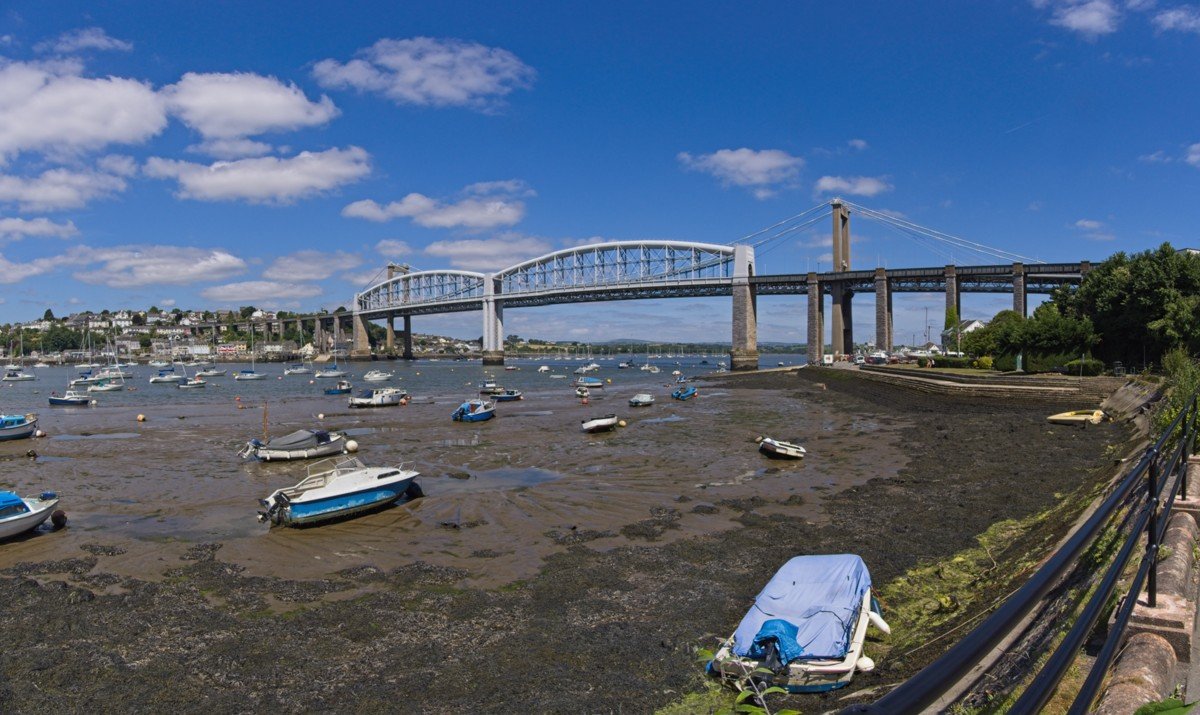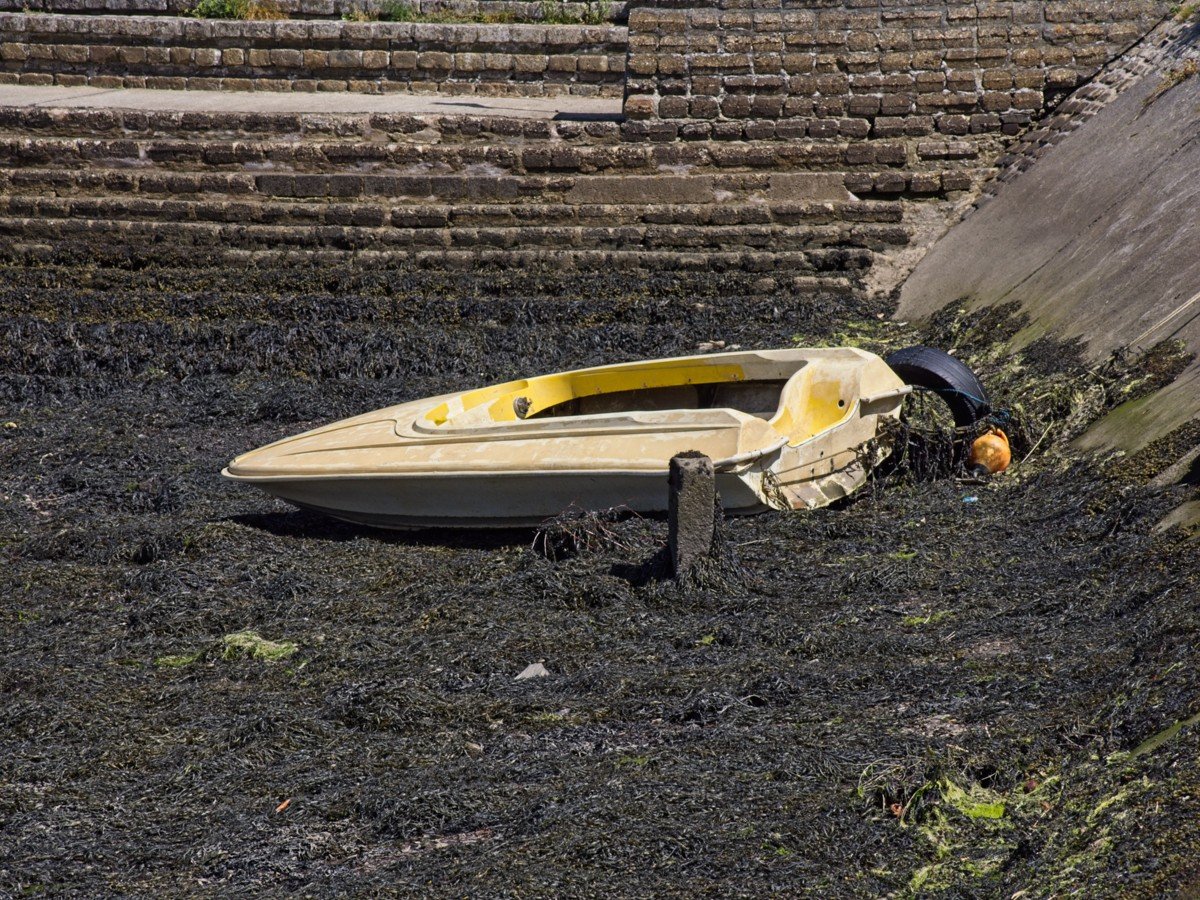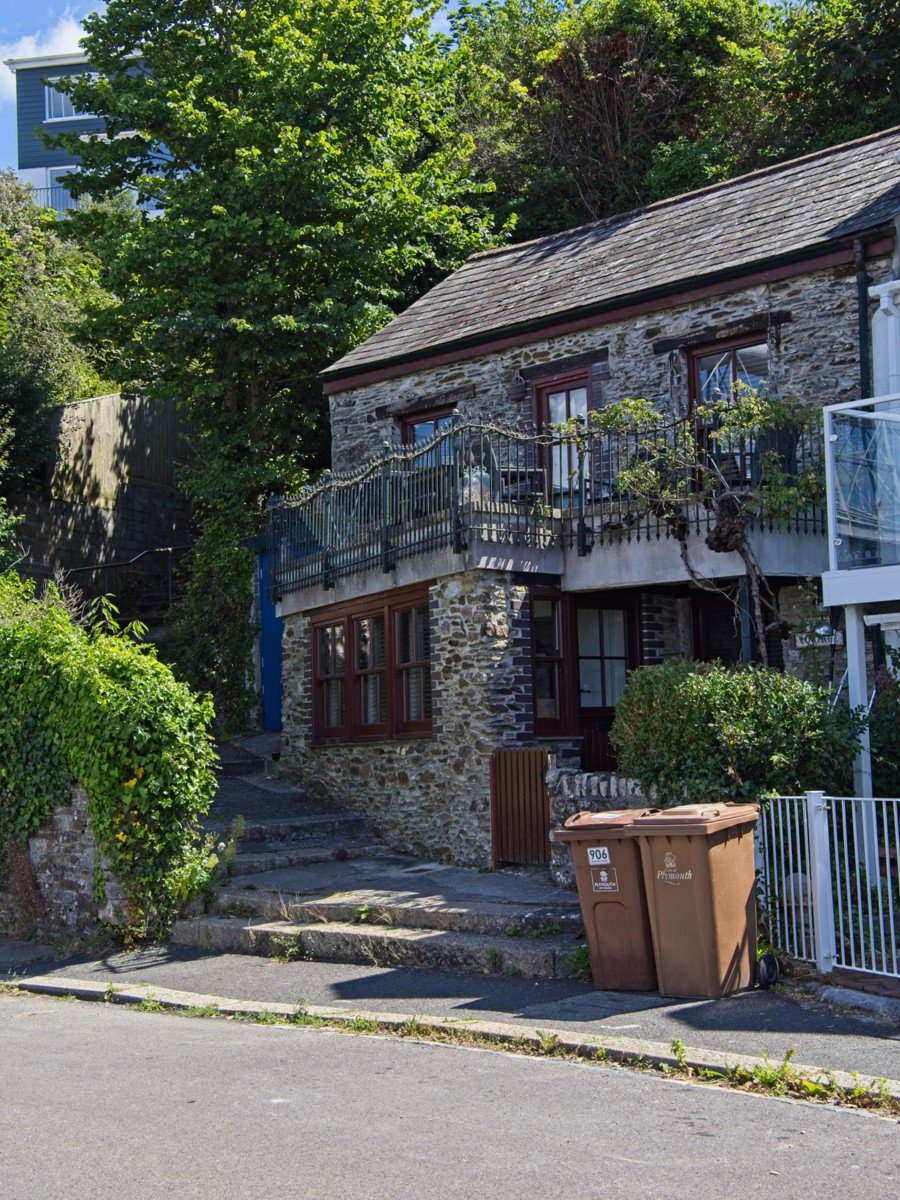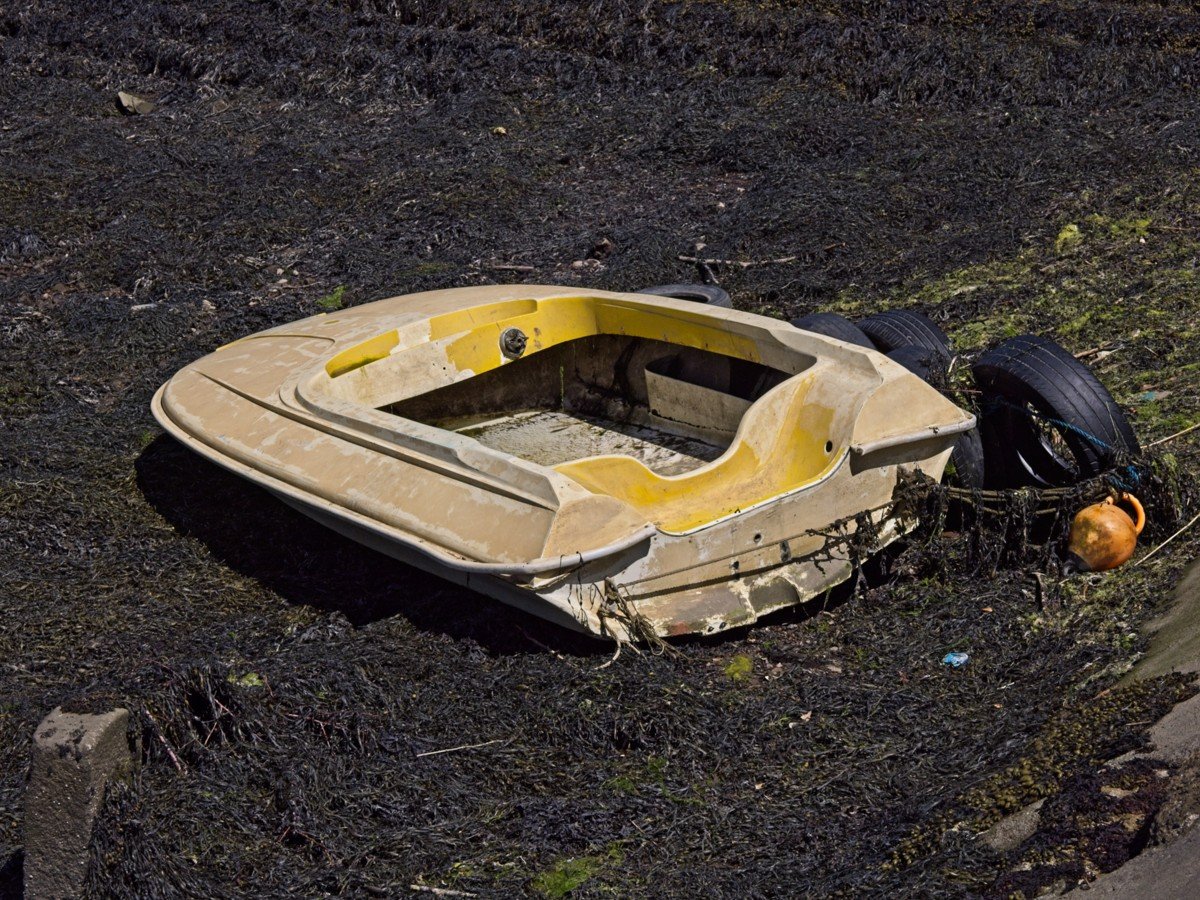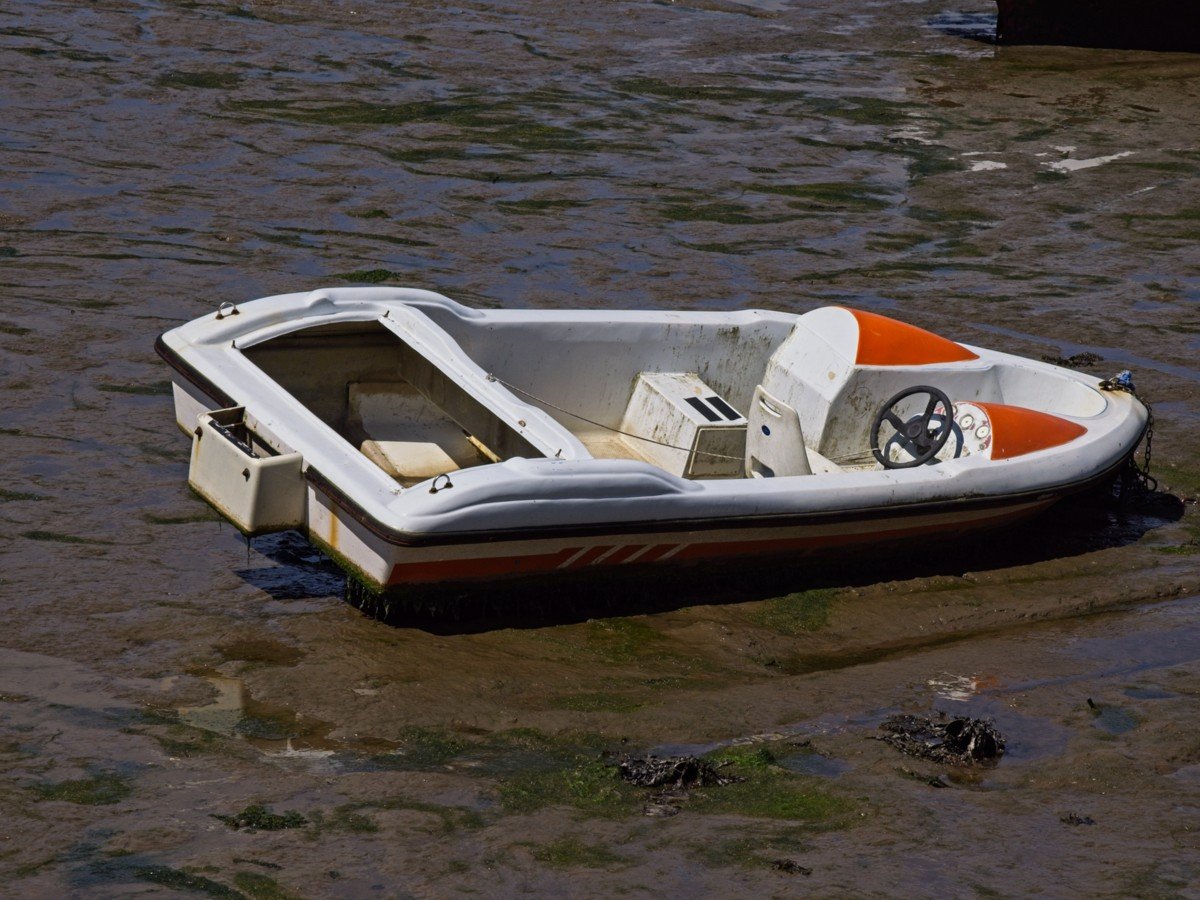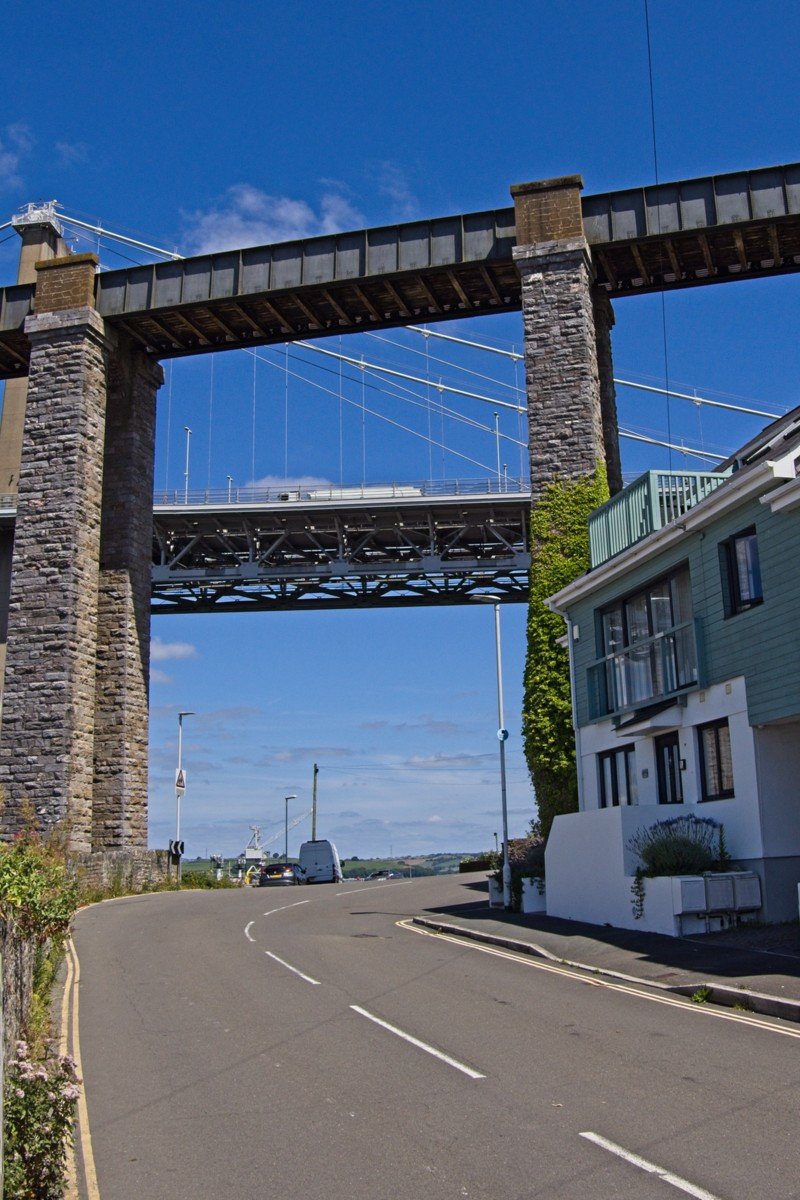TAMAR BRIDGE
The first bridge across the River Tamar was built in the sixteenth century at Gunnislake some distance north of Plymouth. This seven-arched granite bridge, still in use today, was for centuries the lowest crossing-point on the Tamar and one of the main routes into Cornwall. The only other way across, other than travelling north of Dartmoor (the route of today's A30), was by boat.
When a railway line connecting London and Falmouth was proposed in the 1830s there was heated debate over whether it should hug the coast, an engineering nightmare but far more useful as it could serve the big naval port of Plymouth, or travel inland. The coastal route was eventually chosen and Isambard Kingdom Brunel, then chief engineer for Great Western Railways, was tasked with designing the first bridge connecting Plymouth and Saltash.
What he came up with was a feat of engineering so unique that twenty thousand specatators came to watch the huge lens-shaped iron trusses being hoisted one hundred feet above the water. Sadly, Brunel died shortly before what many consider to be his greatest achievement was completed in 1859. Guidebooks that came out that year were lavish with their praise "For novelty and ingenuity of construction (this bridge) stands unrivalled in the world."
It was joined in 1961 by the Tamar Bridge, built to accommodate the influx of cars, hitherto forced to travel between Devon and Cornwall by means of a small ferry. The Tamar Bridge was the first major suspension bridge to be built after the war, and for a time the longest suspension bridge in England.

